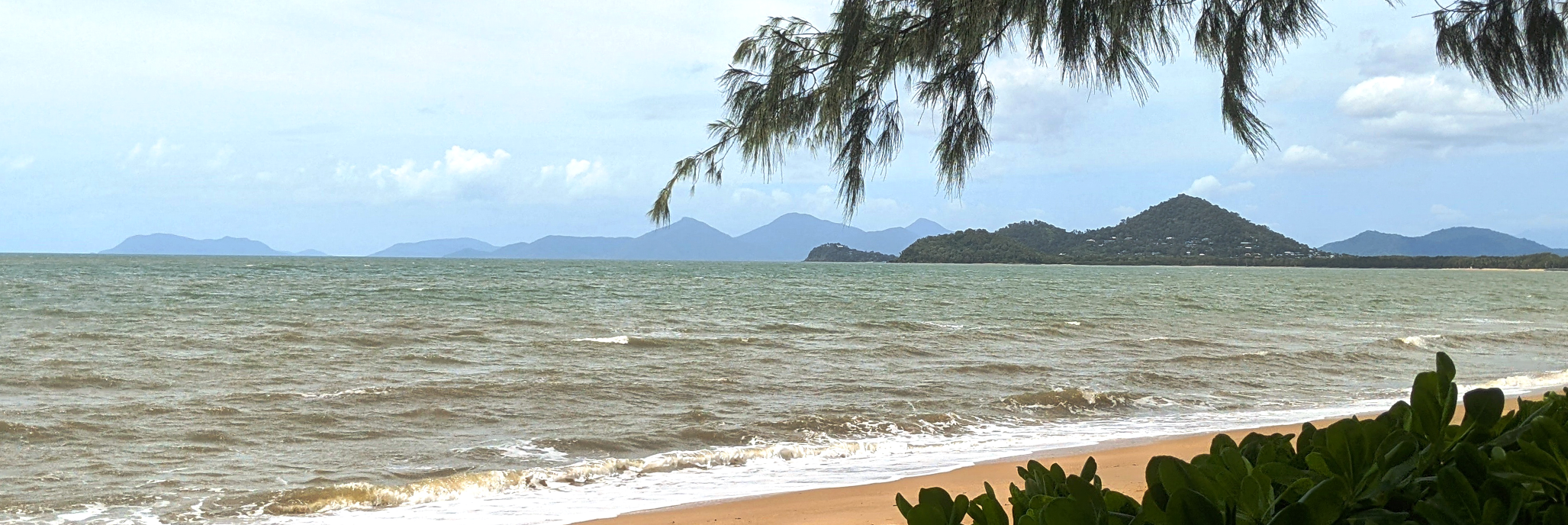
australia
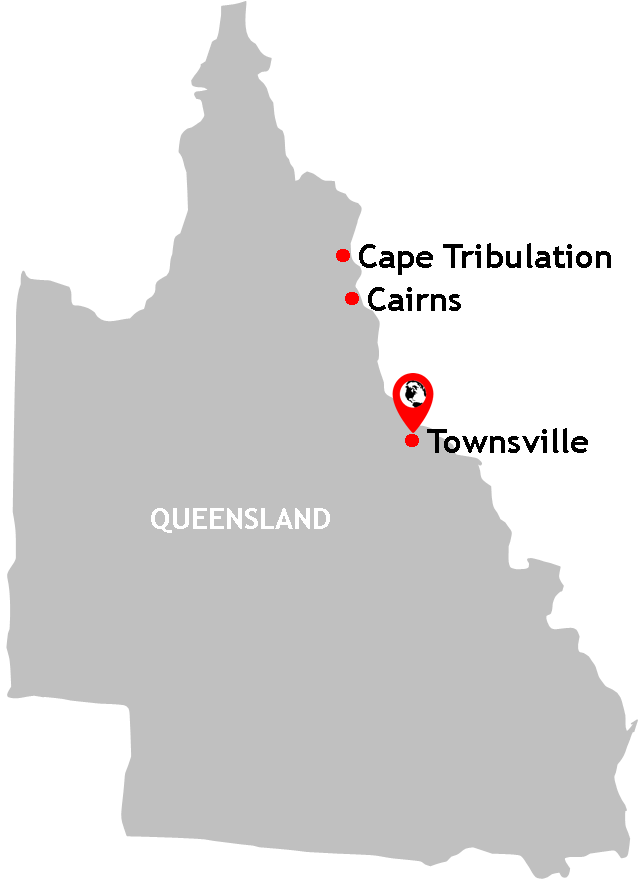
Queensland was my eighth and last remaining Australian state or territory. By visiting Queensland, I completed my goal of travelling to every Australian state or territory.
Where: Townsville, Cairns & Cape Tribulation. Queensland, Australia. Oceania.
When: April 2022
What: Castle Hill Lookout, Mossman Gorge, Palm Cove, The big Golden Gumboot, Snorkelling in the Great Barrier Reef, Cairns' Captain Cook statue, Diamond Wildlife signs for Cassowary, Tree Kangaroos and Stingers, Walu Wugirriga lookout, Sleeping in the oldest surviving tropical rainforest in the world, Dubuji Boardwalk, Madja botanical walk, summitting Mount Sorrow.
Wildlife spotting: Cassowary, Saltwater Crocodile, Brush Turkey, Leeches, Orb Weaving Spiders, Underwater life on the Great Barrier Reef, Green Turtle.
How: Domestic flights, hire car, walking, car ferry.
Mishaps or illnesses: Having to re-route our entire journey around the availability of a hire car; scraping bleeding leeches from my feet during my hike in the Daintree; Falling down (and up) Mount Sorrow - multiple times.
After a number of aborted attempts to visit Queensland because of a pandemic-crippled domestic travel industry, in April 2022 I finally got my chance to tick off my last remaining Australian State or Territory. It seemed particularly fitting that, as international travel began to make its first tentative steps towards something akin to normal, I reached the end of my travel quest to visit every state or territory in Australia; a satisfying Aussie bookend to my journey around this vast continent. During my time incarcerated in 'fortress Australia', I succeeded in exploring an impressively-large slice of my home state New South Wales, as well as making it inter-state to both South Australia and Tasmania. And so it was with some elation that I touched down in Townsville, Queensland, to begin our road trip along the east coast to Cairns and Cape Tribulation.
Our adventure in the enigmatically-named Tropical North Queensland began in Townsville, the largest city in the region. Admittedly the only reason Townsville featured in our itinerary at all was to collect a hire car; there were absolutely none available at our intended destination of Cairns (this kind of shortage is a particularly Aussie problem I have found). Another issue with leaving planning this trip so late was the fact that the only flight with seats available was the 06:30am departure. With Australia's larger airports experiencing significant passenger processing delays because of the pandemic this meant waking up at the unholy hour of 3am - all to catch a domestic flight. Anyone would think I was travelling to the Moon.
A stop for some lunch and coffee, as well as a drive to the top of Castle Hill to take in the view of Townsville, preceded our 350 kilometre drive northwards along the very Aussie-named Bruce Highway. We took a coffee pit-stop at Cardwell, a small coastal town with some palm trees leaning evocatively in to an all-but-deserted beach lining the salty waters of the Coral Sea. Of course, there's a reason why such idyllic-looking beaches in this part of Oz are almost entirely empty; it was in Cardwell where I first saw warning signs for what is undoubtedly Australia's most-feared predator: the Saltwater Crocodile. The thought of being taken by a Croc (locals crassly say "snapped up") is just too hideous to contemplate. This unsettling sight of near-deserted beaches was one which was to repeat itself throughout our trip northwards. And this is the great irony of Far North Queensland: it has miles upon miles of paradisal beaches, some stretching for as far as the eye can see, but which no-one in their right mind dare use. Here the swimmers, kayakers and surfers are conspicuous only by their absence. Perhaps this felt all the more striking to me because I live in a state where the beach is often the epicentre of life. If the Crocs themselves aren't enough of a deterrent then the threat of jelly fish ("stingers") just might be. Indeed, another curious sight lines the coast in this part of Australia: red-coloured emergency vinegar stations for use on jellyfish stings. There was also time to stop at Tully, a town with one of Australia's "Big Things": a giant golden gum boot. By now we were experiencing travel in The Tropics: torrential rain, humidity and moody leaden skies.
Five hours later we would find ourselves in Queensland's Far North and the tropical city of Cairns; gateway to the world famous Great Barrier Reef. We checked into something billing itself as a "tropical retreat" but, on closer inspection, turned out to be little more than a typical Aussie motel with a few palm trees and bamboo fountains dotted around. We had little time to rest up as, the following morning we would be up early again and heading down to Cairns Esplanade to catch a catamaran deep out into the Coral Sea and on to the Reef itself. The journey from Cairns to our first snorkel spot Upolu Reef took well over an hour and was as bumpy as any boat ride I've been on; lurching and tilting and skidding. Not always having been the best on boats I made sure I stayed outside in the fresh air and focused on the horizon way off into the distance. Indeed, on this kind of travel experience the journey is also part of the destination, as demonstrated by the happy little Green Turtle we spotted bobbing in the turquoises of the Coral Sea.
Admittedly, it had been quite some time since I last went snorkelling. I'm no novice having had the pleasure in Vanuatu, Fiji and Oman. However, on jumping into the sea with my snorkel gear attached, I immediately drew the attention of one of the crew who came to rescue me with a life buoy: embarrassing in retrospect but I was glad of his assistance at the time. It seems that the cold of the water (even with my anti-Stinger wetsuit on), plus the need to breathe through my mouth rather than my nose, was a little too much for me to co-ordinate on first entering the water. Still, it wasn't long before I was happily snorkelling over coral filming the fish in their underwater world as I went. A second snorkel in the afternoon at an alternative spot, Upolu Cay Reef, offered an enhanced view of the watery world; water levels had dropped and winds, which had stirred up the sea bed earlier on in the day, had eased. This was where I was able to behold this watery place in all its colourful otherworldly majesty. This most famous of travel experiences was marred only slightly by a leaky snorkel mask which kept letting salt water up my nose and into my eyes. The mild irritation I felt at the failure of my snorkel equipment evaporated in the knowledge that I was enjoying one of the 7 Wonders of the Natural World and one of the most famous experiences in world travel. I arrived back in Cairns at dusk, my body exhausted but my heart filled with a sense of achievement. Before departing Cairns the following morning there was just enough time to squeeze in a visit to the city's Lagoon swimming pool. Its sculptural silver fish mounted on poles and spraying jets of water have become somewhat of an icon for the city - a testament to great design and public architecture. The road leading out of Cairns North took us past a distasteful statue of Captain Cook doing, what I can only describe as, a kind of Nazi salute. It looked weathered and uncared for.
Our drive from Cairns to Cape Tribulation, some 140 kilometres, was punctuated by a stop at Rex Lookout at Wangetti, Palm Cove for coffee and a 3 kilometre hike through a steamy Mossman Gorge in Daintree National Park. It was on this second leg of the road trip that I spotted my first, and only, Saltwater Crocodile. It was basking in the sun on the muddy banks of a creek as we drove along the freeway. I found the close proximity of modern road and deadly beast quite shocking. It helped to jolt me out of the false sense of security that such deadly beasts are only to be found far away in the wilder, remoter areas of Queensland. In reality it would be safer to assume that this apex predator can be residing in or near any body of salt water: rivers, beaches, mangrove swamps and creeks. To get to Cape Trib, to give it its Aussie abbreviation, we needed to take the Daintree cable ferry across the Daintree River, a floating platform pulled by cables and manned by grizzly-faced men wearing obligatory straw sun hats. The last time I travelled on one of these floating contraptions was during my trip to Transnistria - not the best parallel for Australia. And this points towards another observation that the eagle-eyed traveller cannot help but make about Australia: the infrastructure outside of the main state capitals is sometimes embarrassingly woeful. Admittedly, however, there is a certain charm about the rudimentary nature of Aussie life out in "the Country". In Australian culture the Country is readily associated with warm welcomes, mateship and people who graft hard (referred to at "battlers"). A dog, a Kelpie cross, sitting on the back of a ute in front of us completed this most Aussie of tableaus. The Daintree cable ferry was authentically and quintessentially Aussie Country and, for this reason alone, I really appreciated the experience.
As we neared our destination, iconic wildlife signs for the Cassowary, Australia's feared but loved, giant bird began to appear by the roadside. I have found that a wildlife sign in Australia guarantees that you will certainly not see the creature featured thereon. However, within twenty minutes or so, this defeatism rapidly evaporated as a large male Cassowary, with three babies in tow, crossed the road up ahead of us. Oncoming cars had stopped too and, for about thirty seconds, all of us were united by a wonderful shared moment watching one of Australia's most iconic creatures, completely unperturbed by the traffic jam they were causing, cross from one side of the road to the other - and doing so at a leisurely pace set by them, not us. I managed to take a couple of really good photographs of the adult male which, to me, appeared a cross between a Turkey and an Emu. Seeing this remarkable bird immediately elevated this trip from just good to completely unforgettable. Crocs and Cassowary on the same drive: when I set off from Sydney two days previous, I daren't have hoped to see so much. Our accommodation for the next two nights would be a wonderful lodge in the middle of the Daintree Rainforest, with an attic room whose windows were surrounded by the green of the forest. At night, this rainforest lodge would come with its own awesome soundtrack: the sounds of rain hitting the tin roof and of weird and wonderful creatures squawking and screeching in the darkness. Mornings were spent enjoying coffee on the porch which backed straight onto the rainforest. It was, of course, completely beautiful. Sometimes in travel you luck out; you never really know what you're getting until you arrive. I'm glad to say that Ferntree Rainforest Lodge more than made up for the so-called "tropical retreat" which had blighted our time back in Cairns.
Queensland was busy and, sadly, too much of our time had been spent sharing our experiences with others. Indeed, it being the school holidays, this meant crowds of families with badly-behaved children. We therefore sought out opportunities to head into wilderness where hardly anyone else would think to go. Enter stage left, the ominously-named Mount Sorrow. Mount Sorrow, 680 metres tall, sits deep inside Daintree National Park. Research online yielded cautionary tales which very nearly dissuaded us from undertaking the 12 kilometre Ridge Trail. It was steep with a required elevation gain of 633 metres, would involve pulling oneself up the mountain using ropes and was infested with leeches. This last fact very nearly put us off entirely but the chance to climb a mountain in the oldest surviving tropical rainforest in the world was one I just couldn't pass up. We had to give it a try. As it was, we set off with some degree of trepidation; trepidation heightened by the fact that we hadn't really anticipated going on such an expedition when we set off from Sydney. As a result we didn't have everything we needed: we were short on water bottles and only one of us had hiking pants. Psychologically we were also a little under-prepared having decided only that morning to commit to the trek.
We squeezed through a small gap in the rainforest wall marked only by an insignificant-looking wooden sign marked "Mt Sorrow Ridge Trail". Within seconds we were in deep green forest, light levels had dropped because of the density of palms at the rainforest canopy and we were already on a steep ascent. There was little time to acclimatise or adjust; the challenge started immediately. This was going to be a tough one but, I solaced, I had climbed many an Aussie mountain and had hiked myself through a respectable chunk of Aussie bushland. I therefore felt that I had it in me to complete what would become, although I didn't know it at the time, my most challenging hike to date. The trail seemed interminable, whenever we thought we must be nearing the top, another stretch of steep climb unfurled in front of us. The distance markers along the route, demarcating "1 km", "2 km" and "3 km" points reached, were mythological in their inaccuracy. At the 1 kilometre marker we had already walked 1.9 kilometres. We looked out for the climbing ropes which, from online research, we were told to expect and, sure enough, there they were. They appeared at one of the steepest sections of trail. It wasn't long before I was on the ropes clambering up the muddy trail but not before the looseness of the rope had me swinging unexpectedly left and crashing into the ground. Ego and legs bruised.
After an eternity of steep ascents, with only a few insignificantly short flat stretches, we reached the top. Our hopes of seeing the view from the summit were dashed; the clouds so characteristic of Tropical Australia during the official Wet Season had swallowed everything in white mist. No matter, just hiking here was reward enough for me. It was at the summit where we foolishly let our guard down. What I hoped would be a little respite and a chance to take stock before commencing the descent turned into a battle with leeches. They took to swarming onto our bags which had been placed on the metal platform and began scrambling up onto my boots. Before I knew it, the springy beasts were making their way up my trousers - and fast. It was then that I spotted one on my hand. All the furious shaking in the world would not dislodge it. The speedy deployment of an Australian Medicare card, seemingly appropriate, enabled me to scrape it off. I set about scraping off others on my boots and on my clothes. It was at this point that, true to its namesake, the rainforest dealt us a deluge of rain. Barely rested from the hike to the summit, we set off back down the ridge having been chased off it by the leeches and sheets of water pouring from the sky. The rain had now made the descent additionally treacherous, with large muddy stretches and slippery rocks and roots now characterising the hitherto dry trail. I slipped multiple times and, at one point, bruised my hip.
It was half-way down Mount Sorrow that I began to feel a strange itchy sensation on my ankle. I had dismissed it at first, considering it to be something related to the rubbing of my hike boots but, after a while, I decided to investigate. Pulling back my socks I saw a squelch of blood and one fat leech gorging itself on my skin. I have to admit I freaked. The Medicare card was once again deployed, as was antibacterial wound wash, wipes and Band Aids. Beleaguered, tired and fast running out of water, I was thankful we only had a few more kilometres left. The remainder of the descent was made memorable by the sighting of a black slug and some particularly ancient specimens of trees which could have been straight out of a fantasy film. The misty drizzle of the rain added to the otherworldly, mystical nature of the forest which I took delight in beholding on several occasions - even though I was mindful of our dwindling energy and water levels, not to mention the invasive prevalence of leeches. We also had no option but to walk under the largest spider I had ever seen. It was suspended above the trail in its orb. Clearly we had not seen this on the ascent earlier. I thanked my lucky stars that I had not walked head-first into the thing. I have never been so happy to get to the hire car in my life. Looking back, it was clear that Mount Sorrow threw everything she had at us: the downpours, the perpetual ascent, the leeches... I couldn't help but muse at how apt the name of the mountain was. The clue was in the name, of course: Mount Sorrow. But I wouldn't have had it any other way. To have completed the Mount Sorrow Ridge Trail in Tropical Far North Queensland was nothing short of a victorious personal achievement and one which, along with snorkelling in the Great Barrier Reef, now rightly graces my Adventure Travel Blog page.
The rest of the trip was unremarkable in comparison: board walks, botanical gardens and a drive back down south to Cairns where we would catch our flight home to Sydney. My journey to Queensland was just domestic travel, of course, but it may as well have been international to some far and distant land; the change to a tropical climate, the crocodiles basking in the sun, the brightly-coloured giant birds holding up traffic, the mystical rainforests straight out of a fantasy film. Over the years I have come to realise that Australia has many faces; she is a multi-headed beast and a continent of bewildering contrasts and diversity. My 500 kilometre journey along the Queensland coast was just a glimpse of this, Australia's wild and Tropical face.
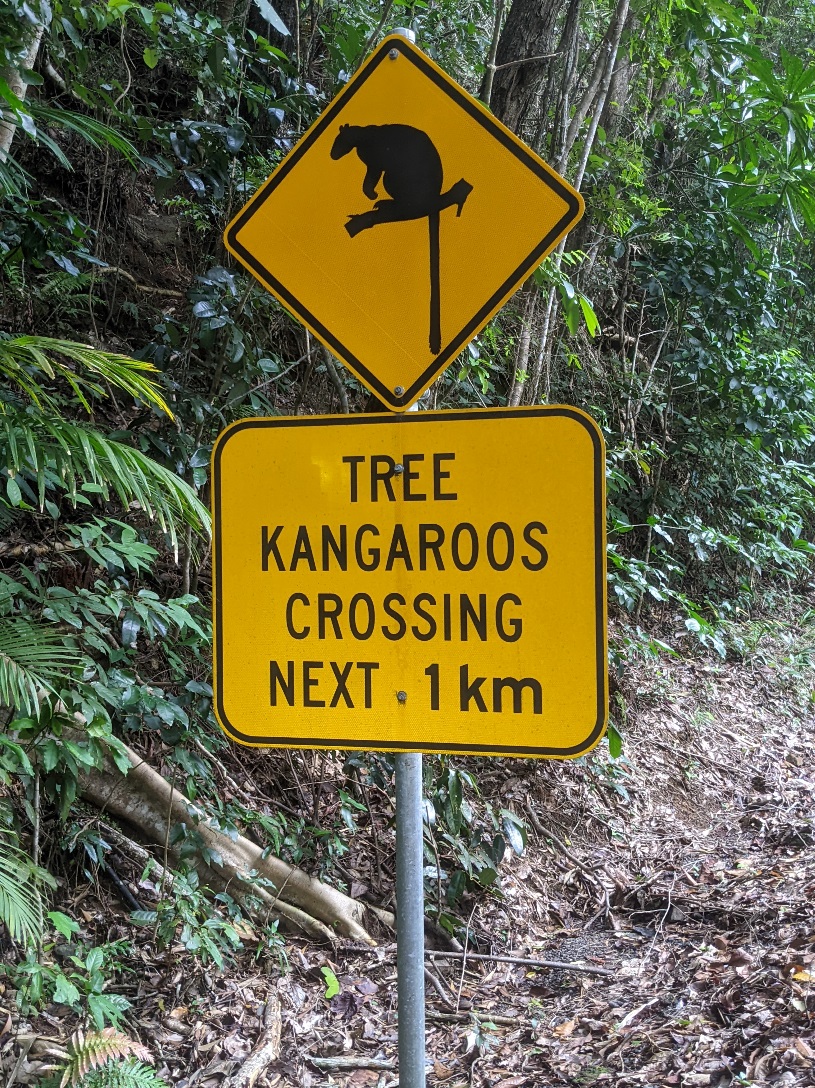

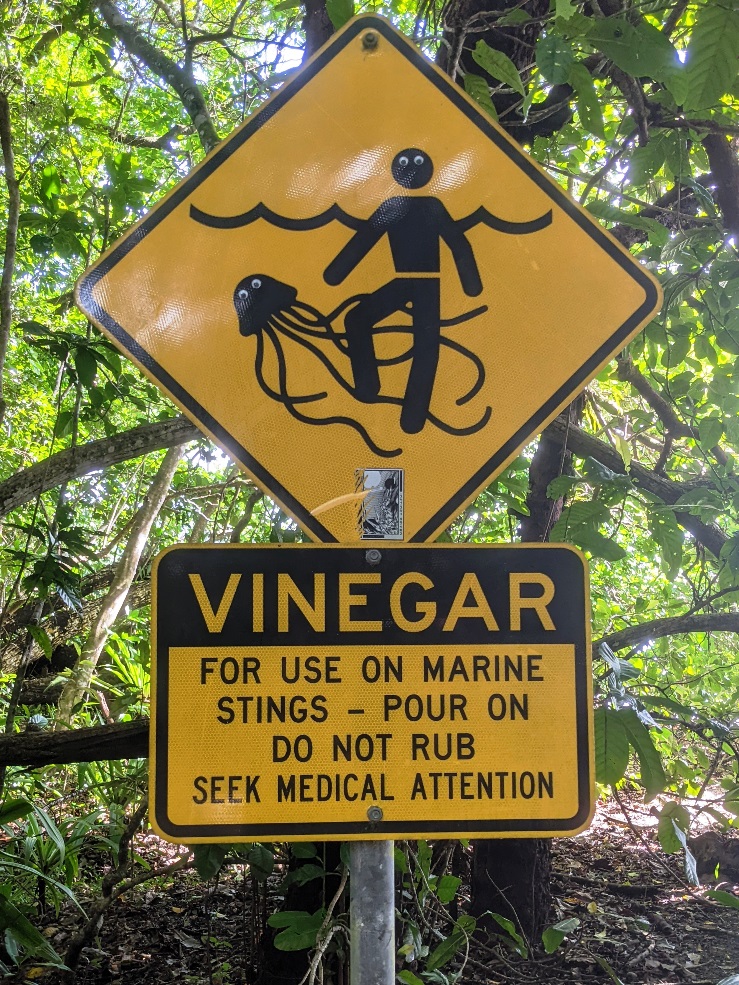
Australia's iconic wildlife signs: the Tree Kangaroo, the Cassowary and the Jellyfish. All seen in Cape Tribulation.

Overlooking Townsville, the largest city in tropical North Queensland.
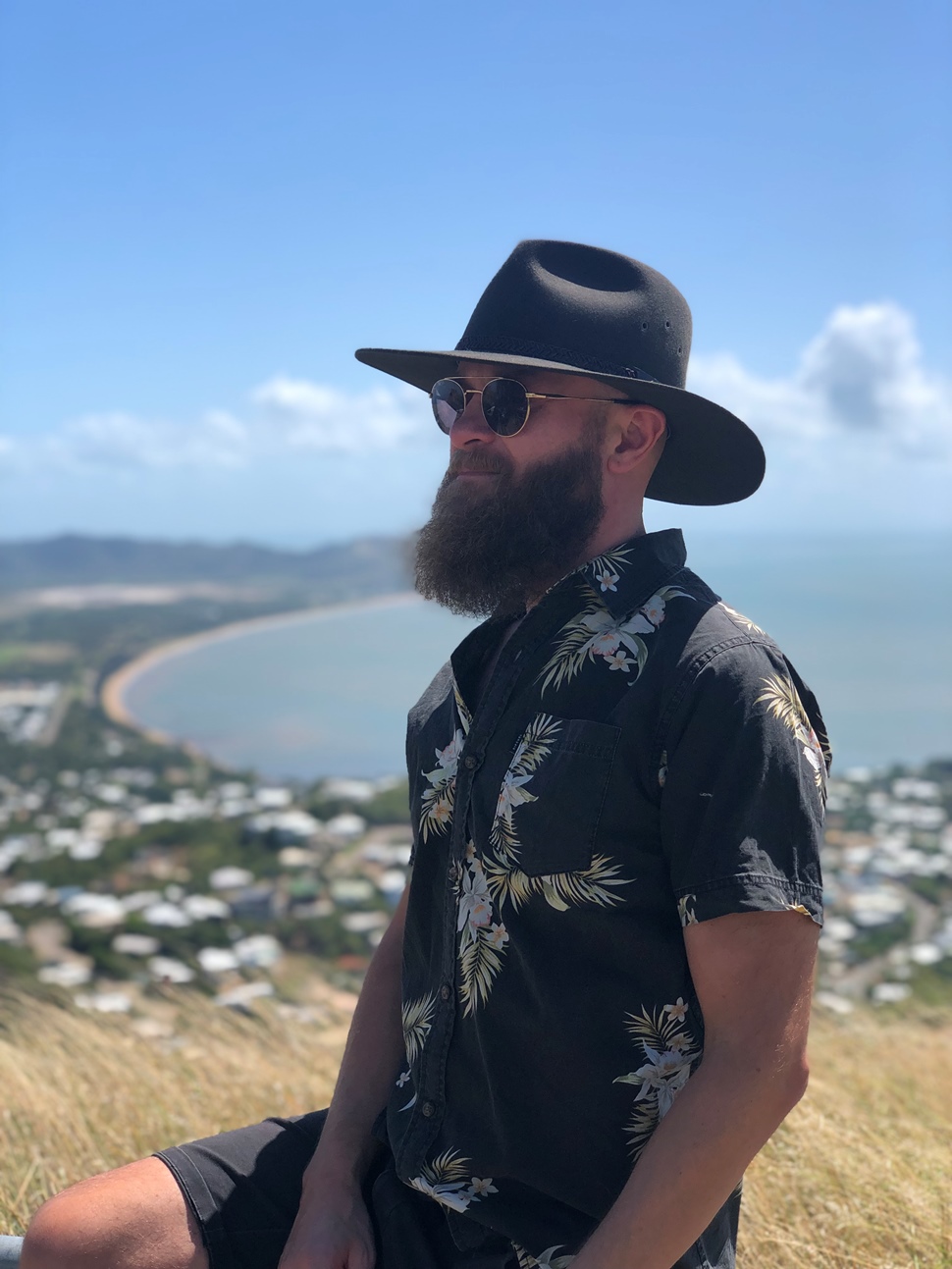
At the top of Castle Hill lookout.

A border board heralds our entry into the Australian Tropics!
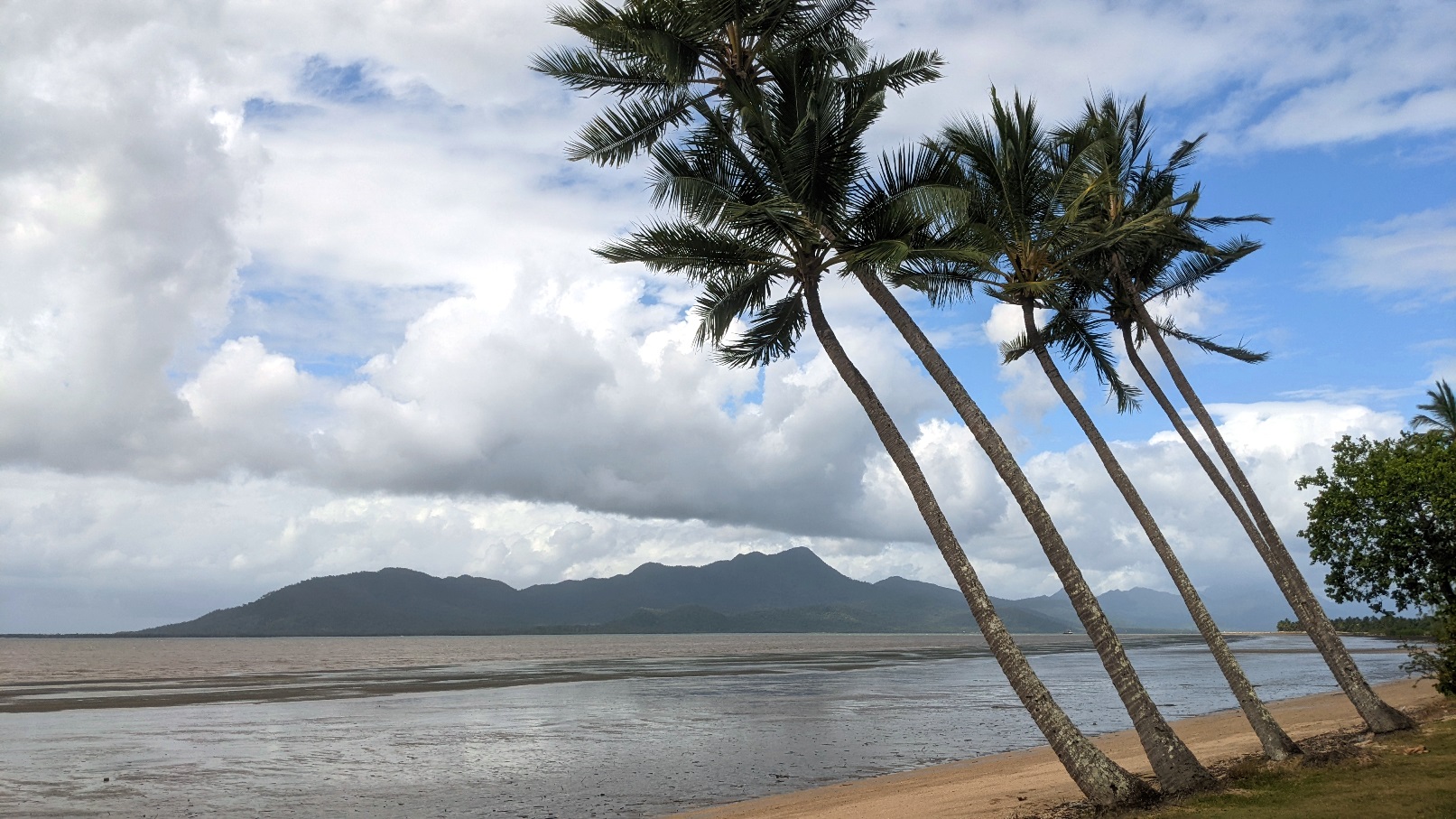
Cardwell and my first sighting of Queensland's deserted beaches. Watch out: crocs about!

The turquoise marine colour of the Coral Sea underneath which lies the Great Barrier Reef. Right, standing on a small sandy island near Upolu Cay Reef in the middle of the Coral Sea having snorkelled from the boat.
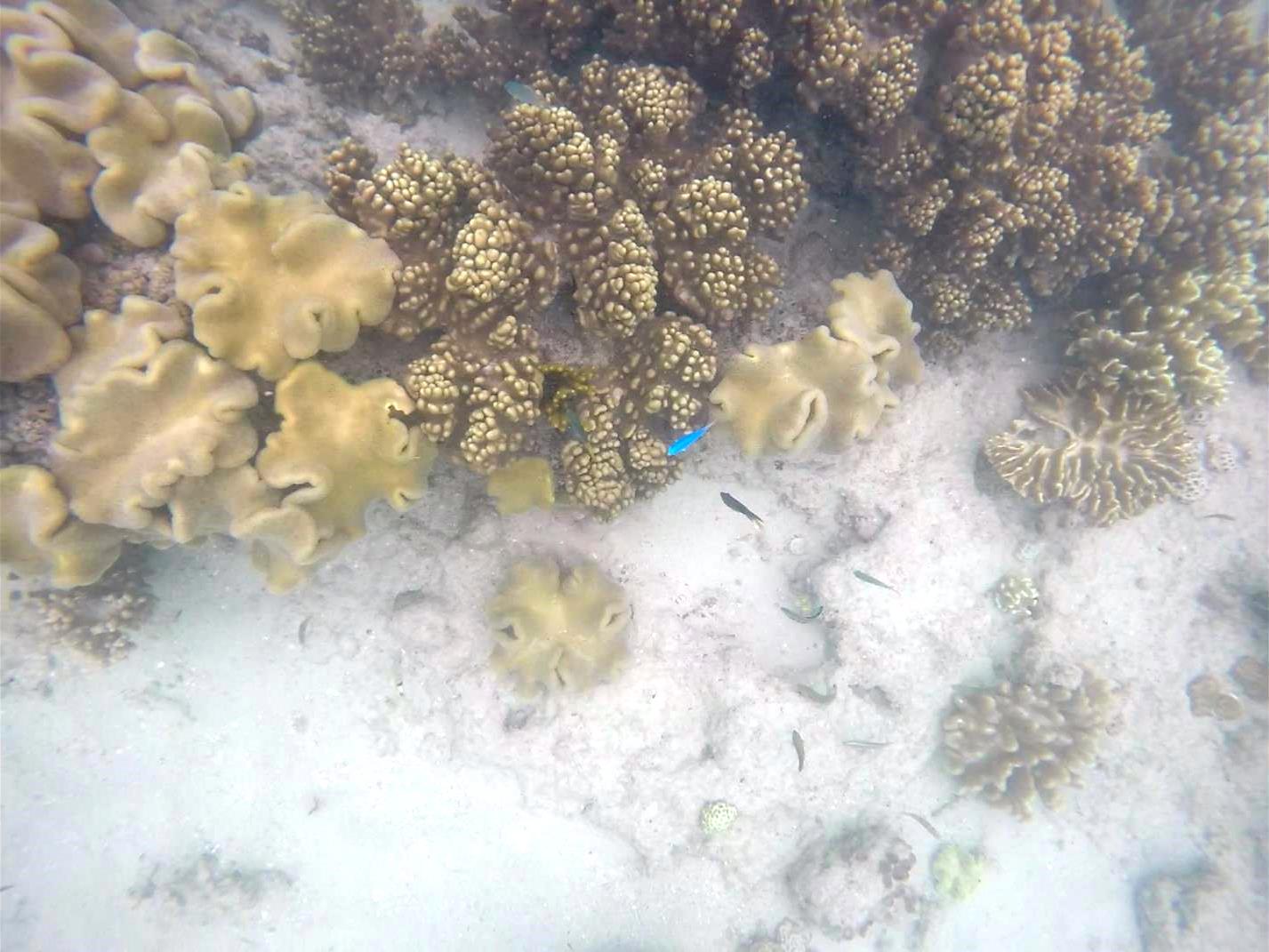
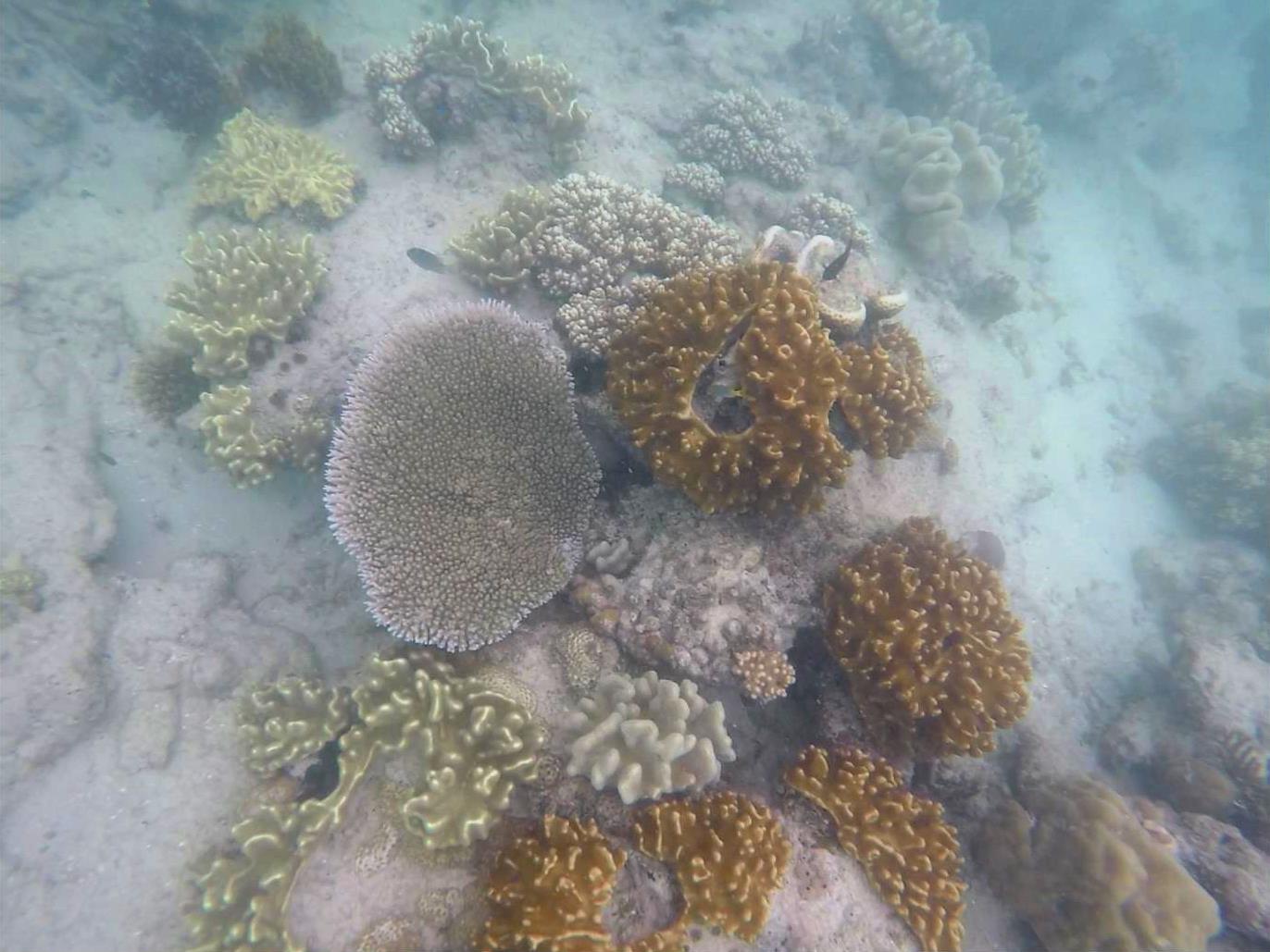
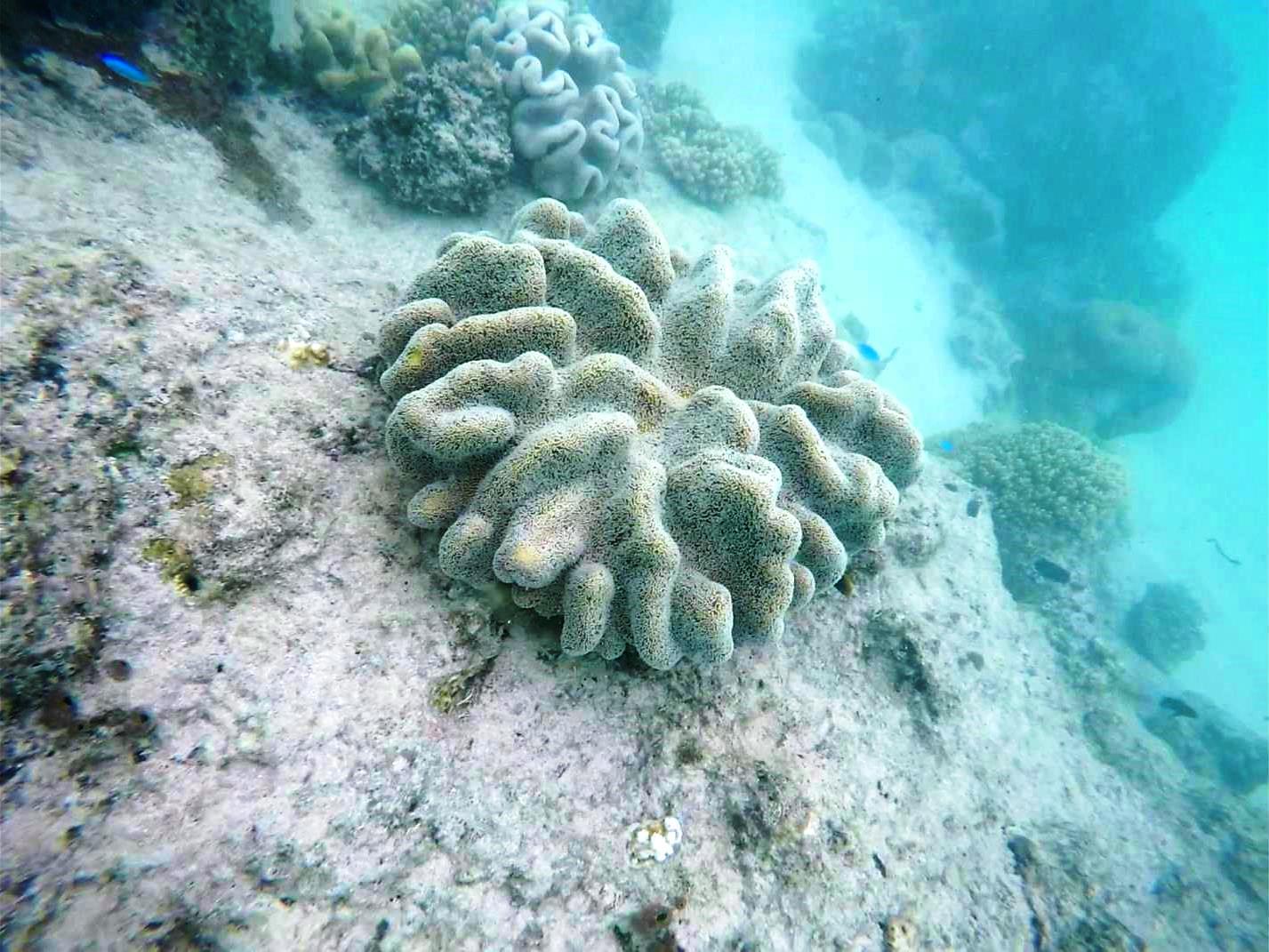

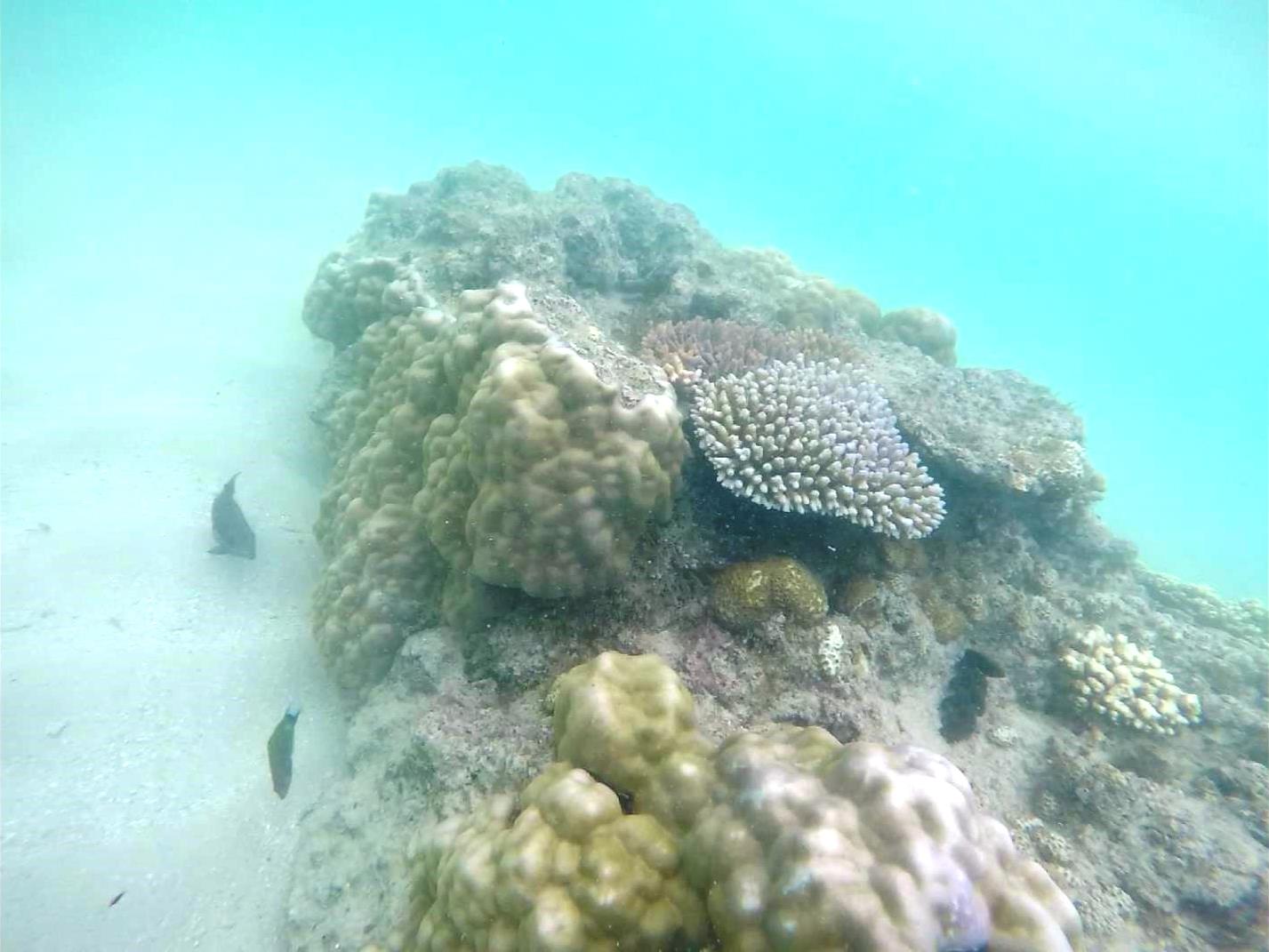
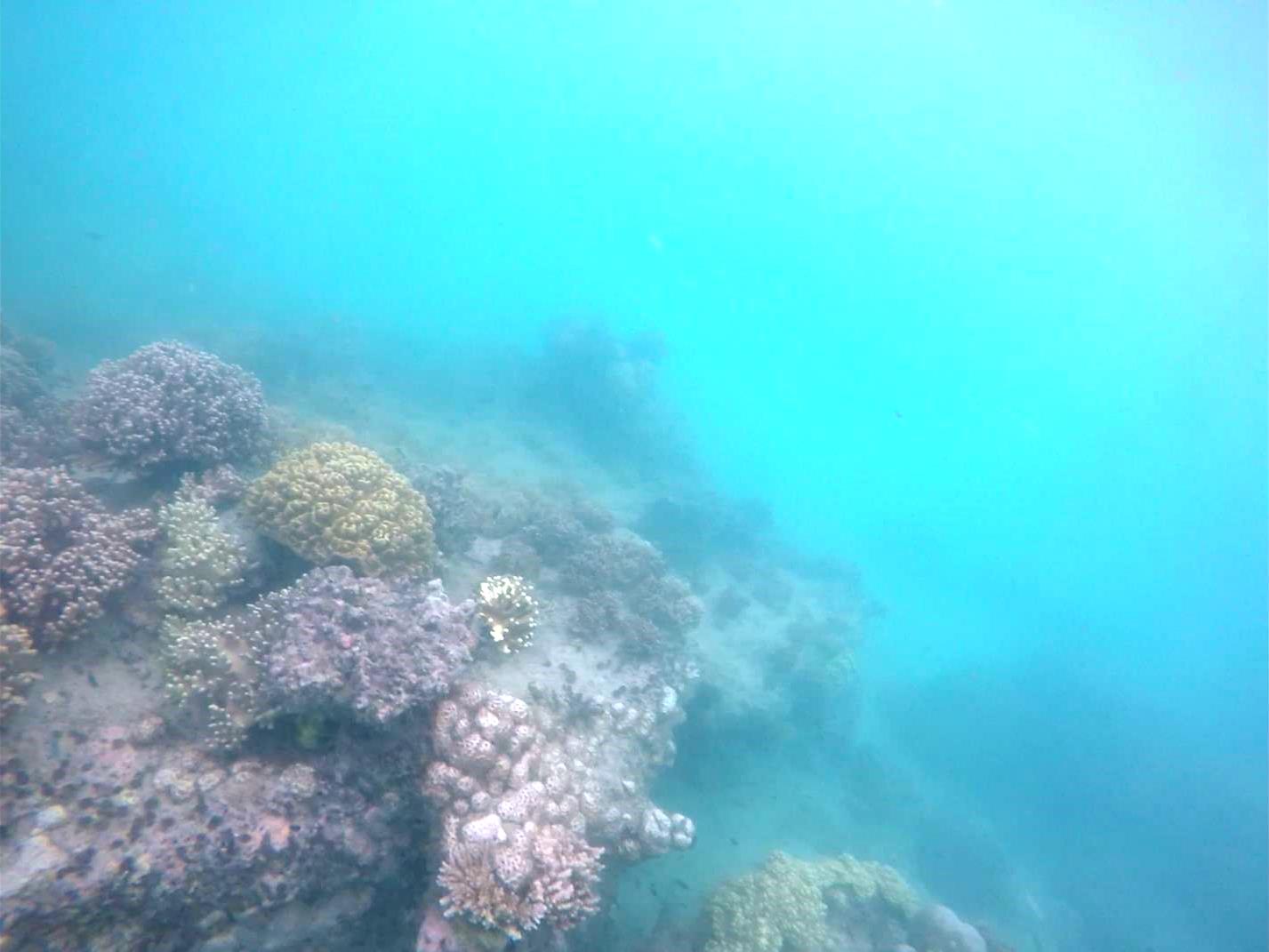
The Great Barrier Reef's marvellous underwater world screenshot from my GoPro footage.
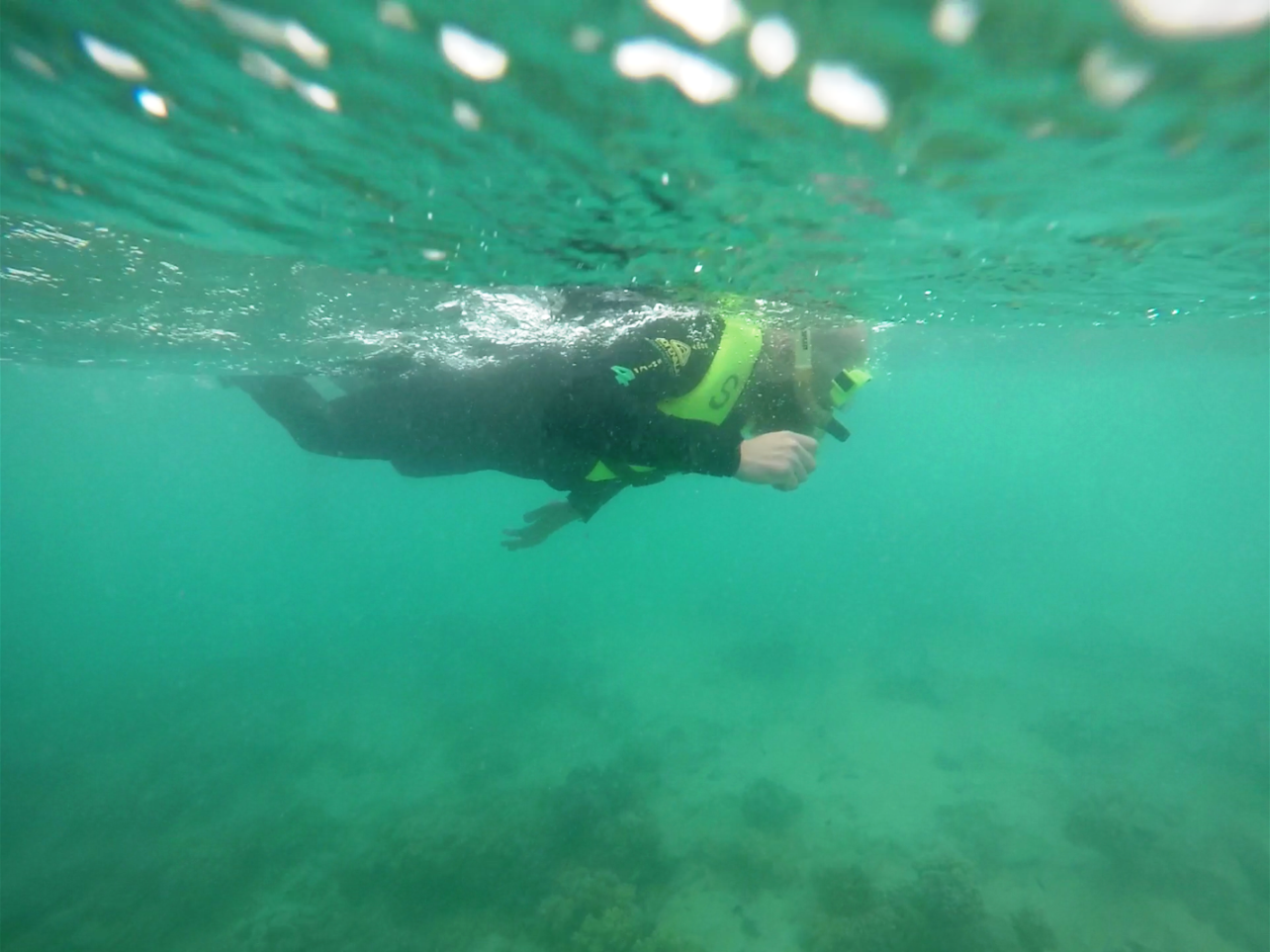
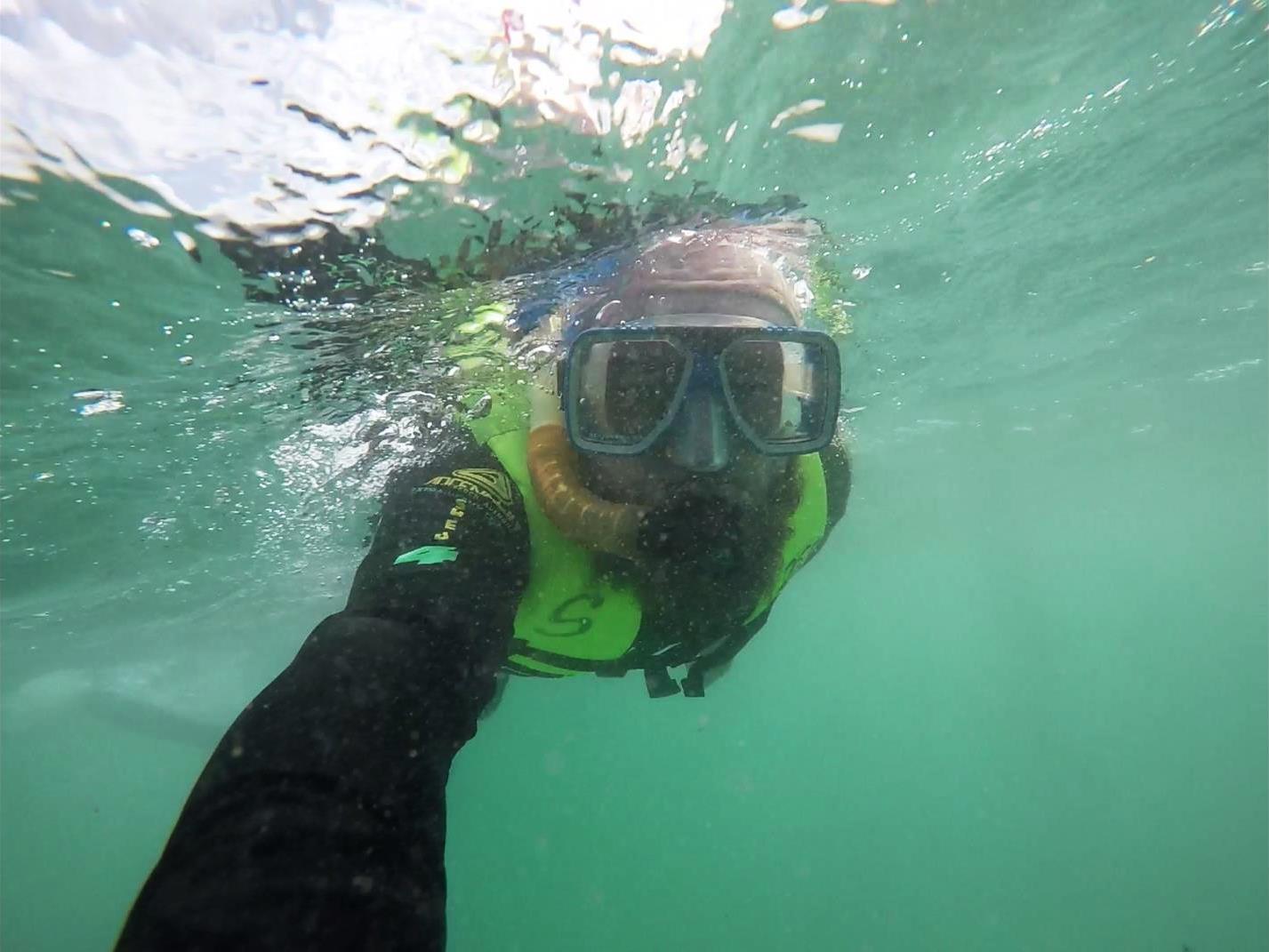
Underwater world: two snorkelling selfies screenshot from the GoPro.
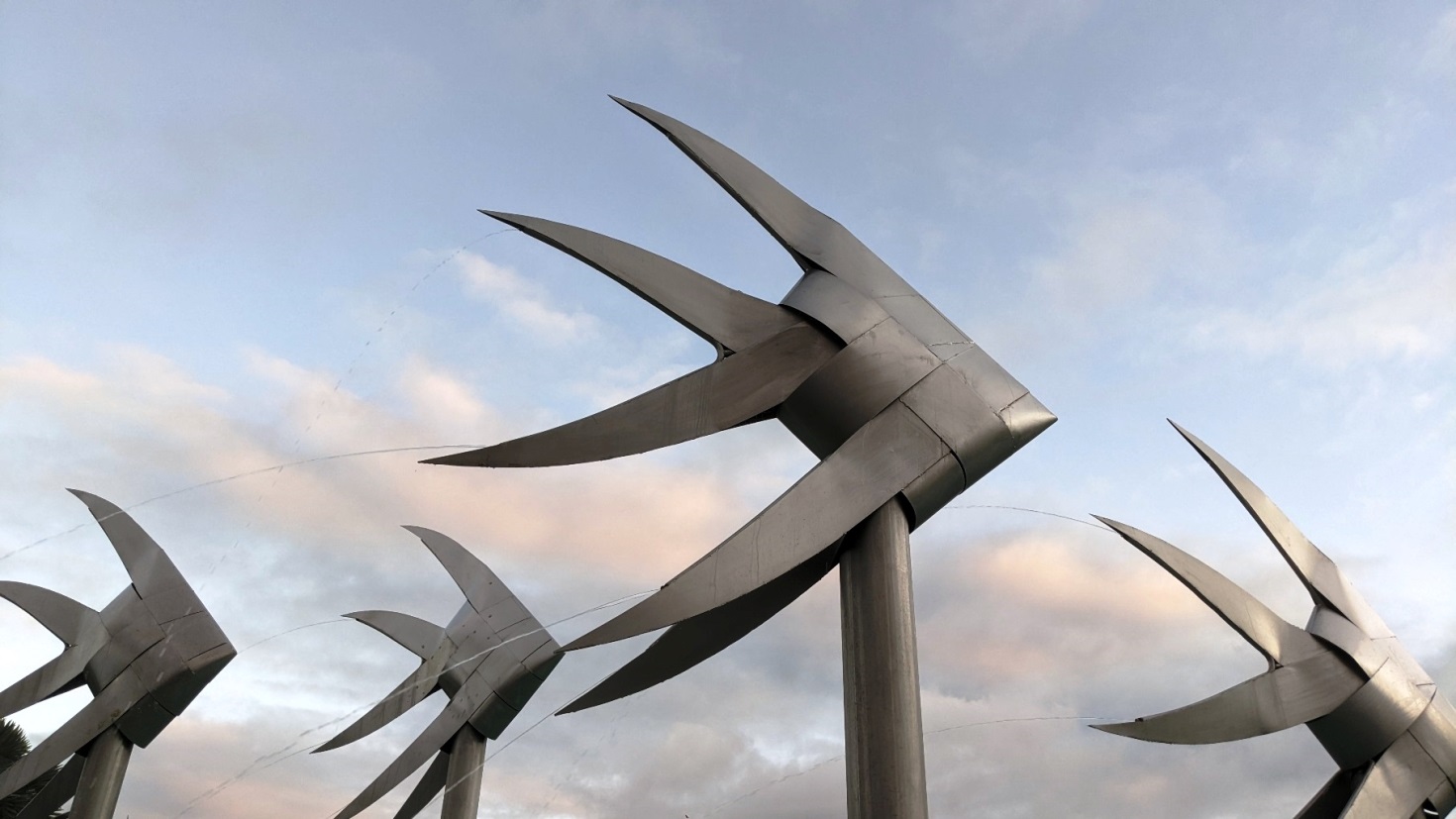
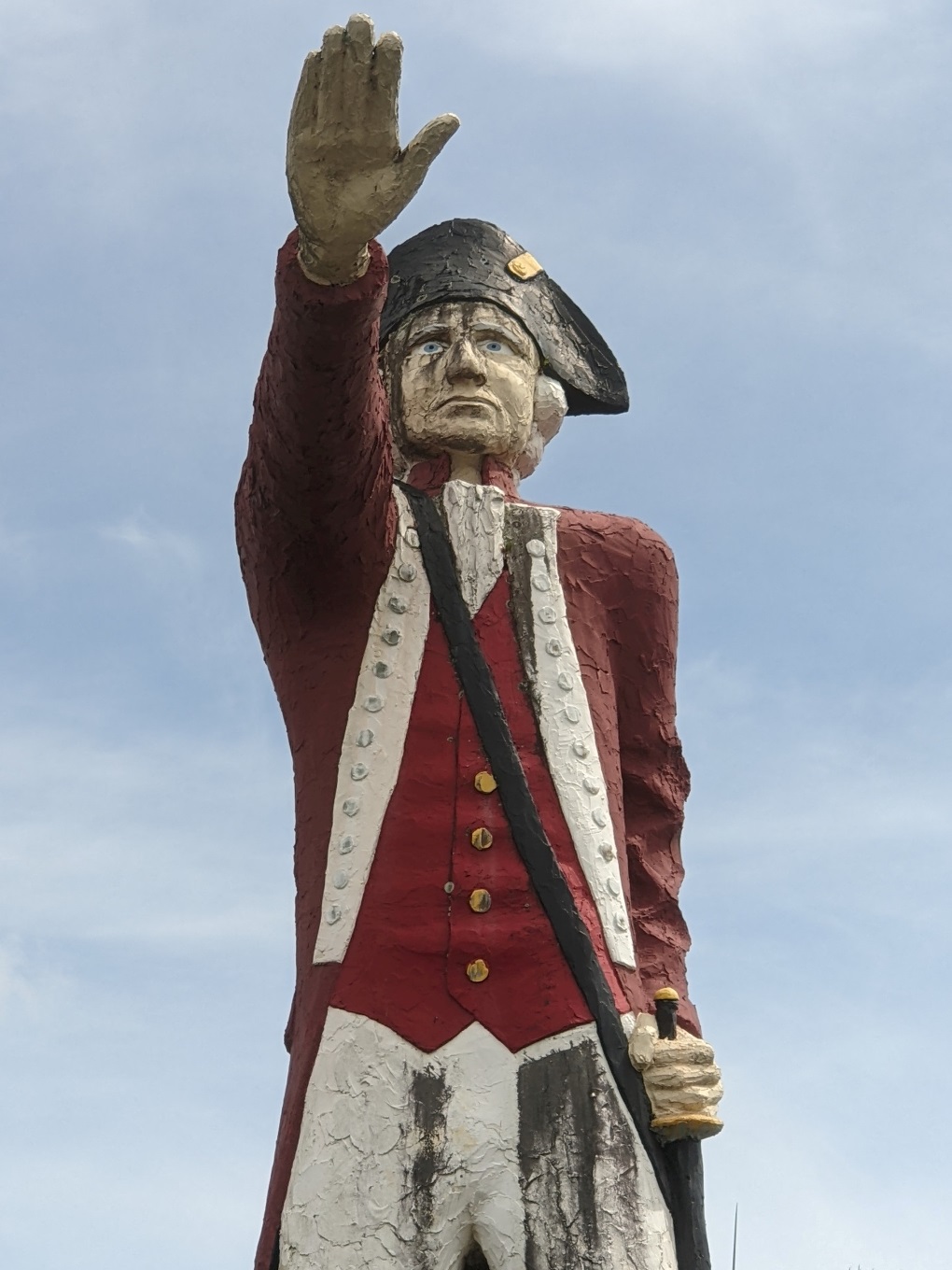
Iconic Cairns: the fountain fish of the Cairns Lagoon and, right, the distasteful colonialism of the Captain Cook statue on the northern outskirts of the city.
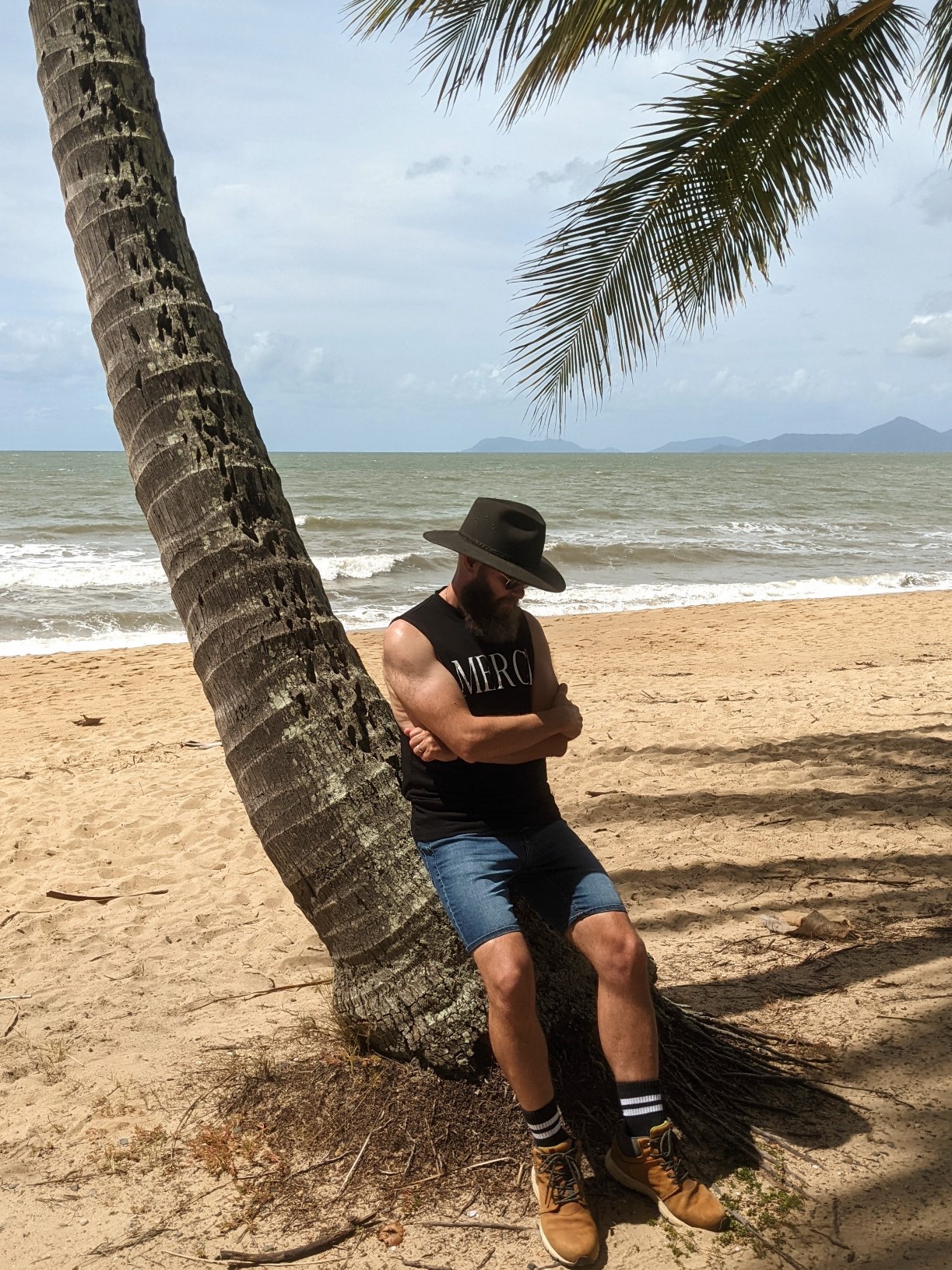
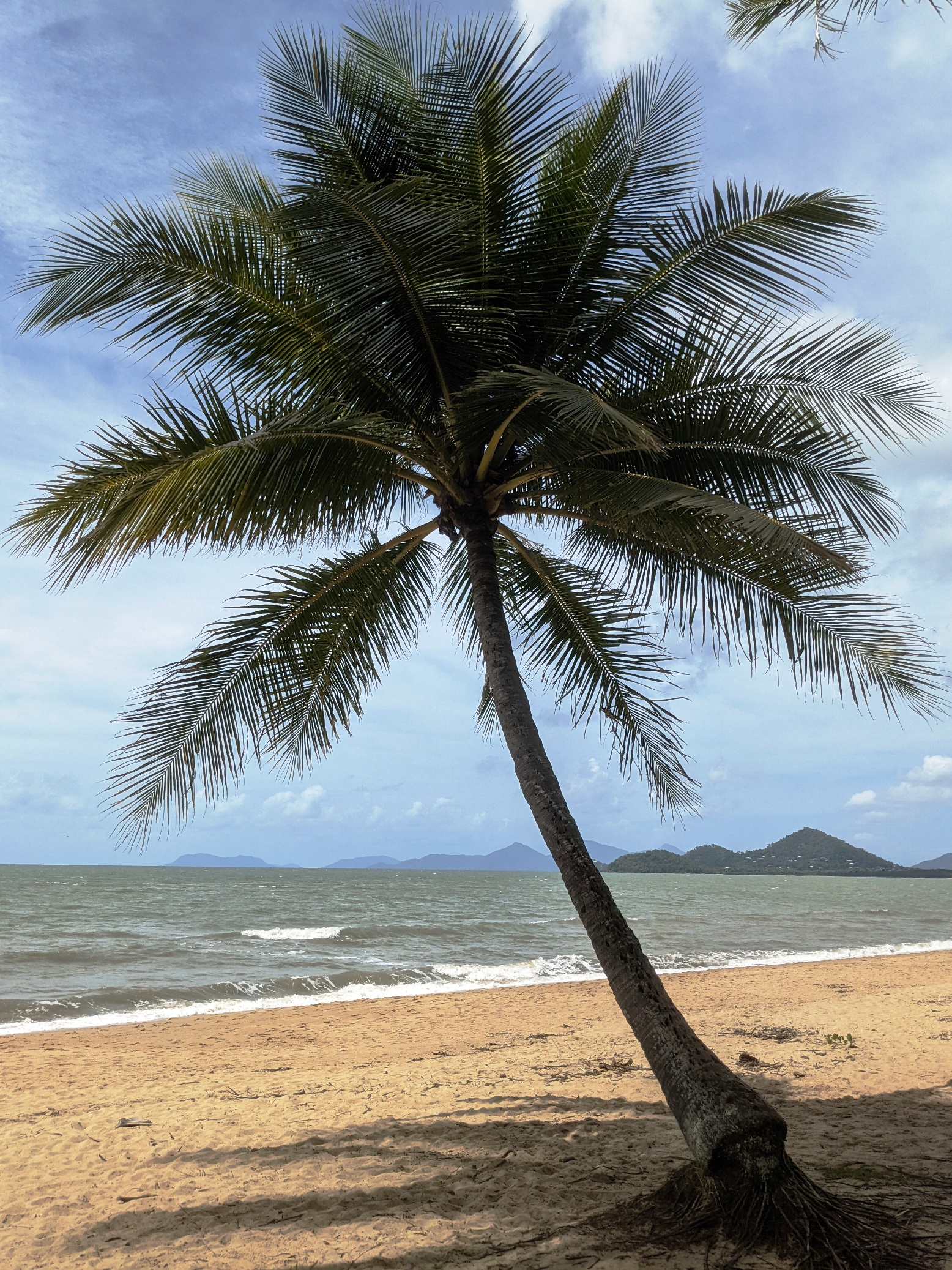
The paradisal beauty of Palm Cove. Another deserted Queensland beach.
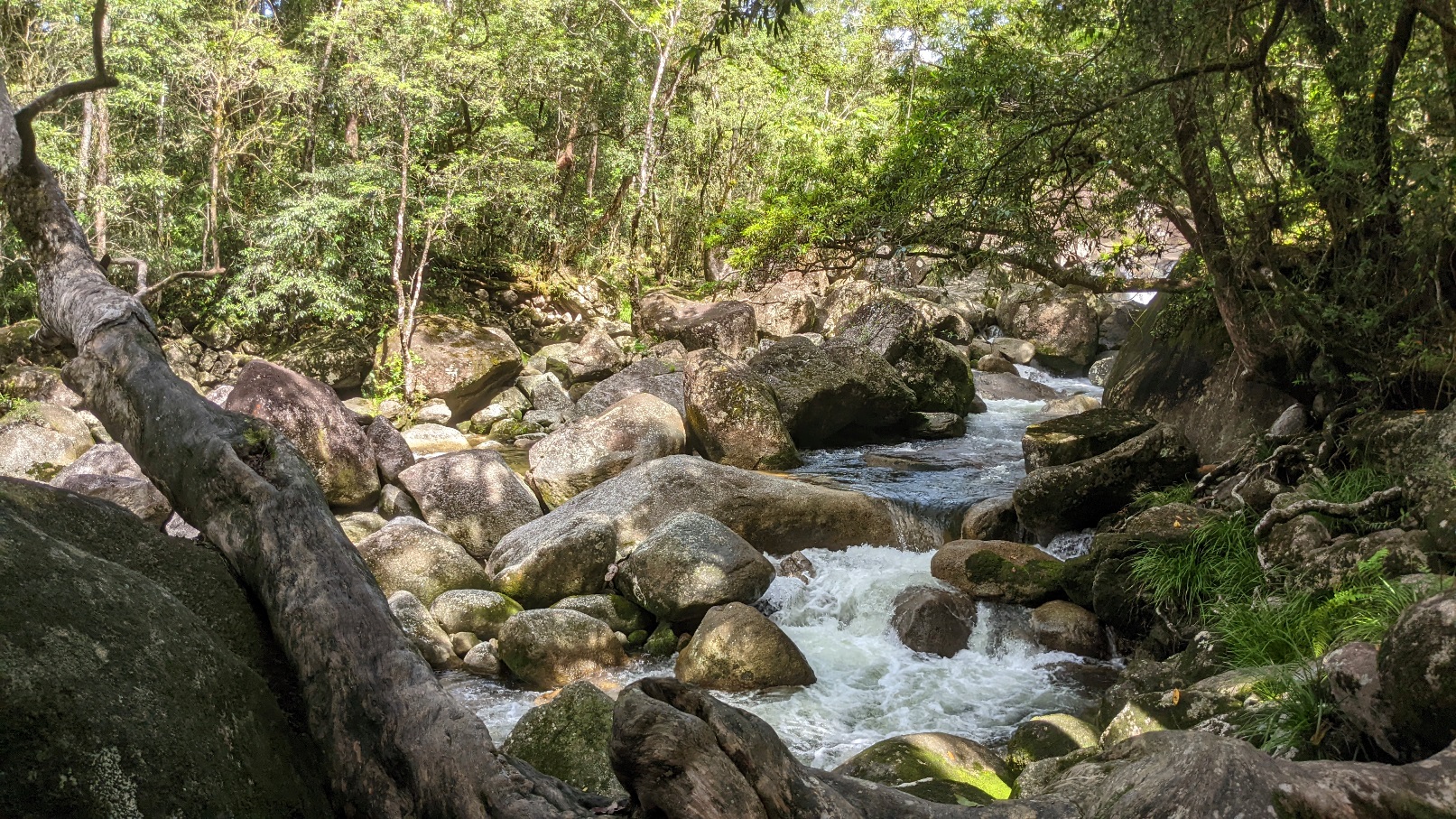
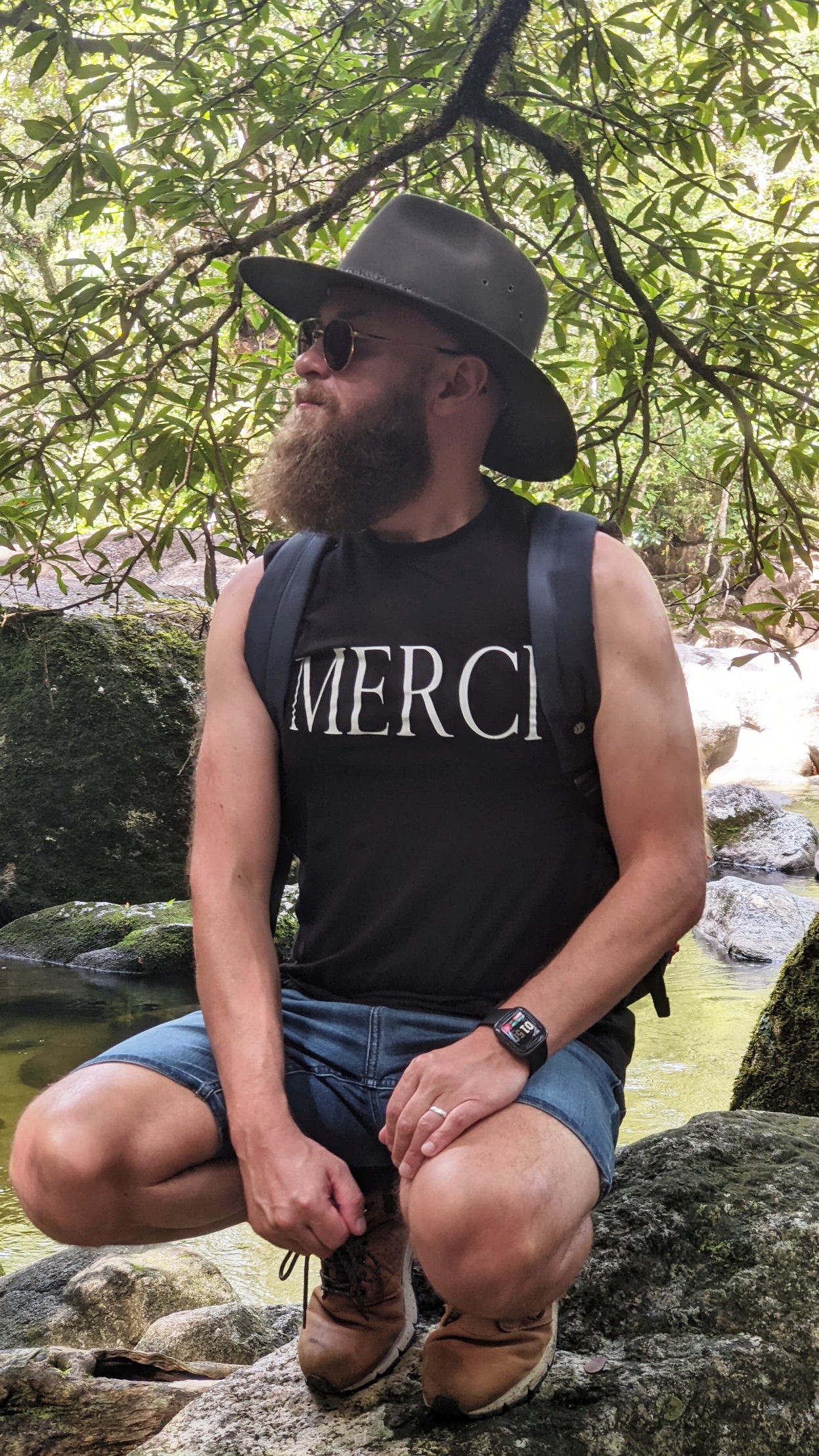
A short and steamy hike in Mossman Gorge. Pretty, but also pretty full of people too. No wilderness to be found here...
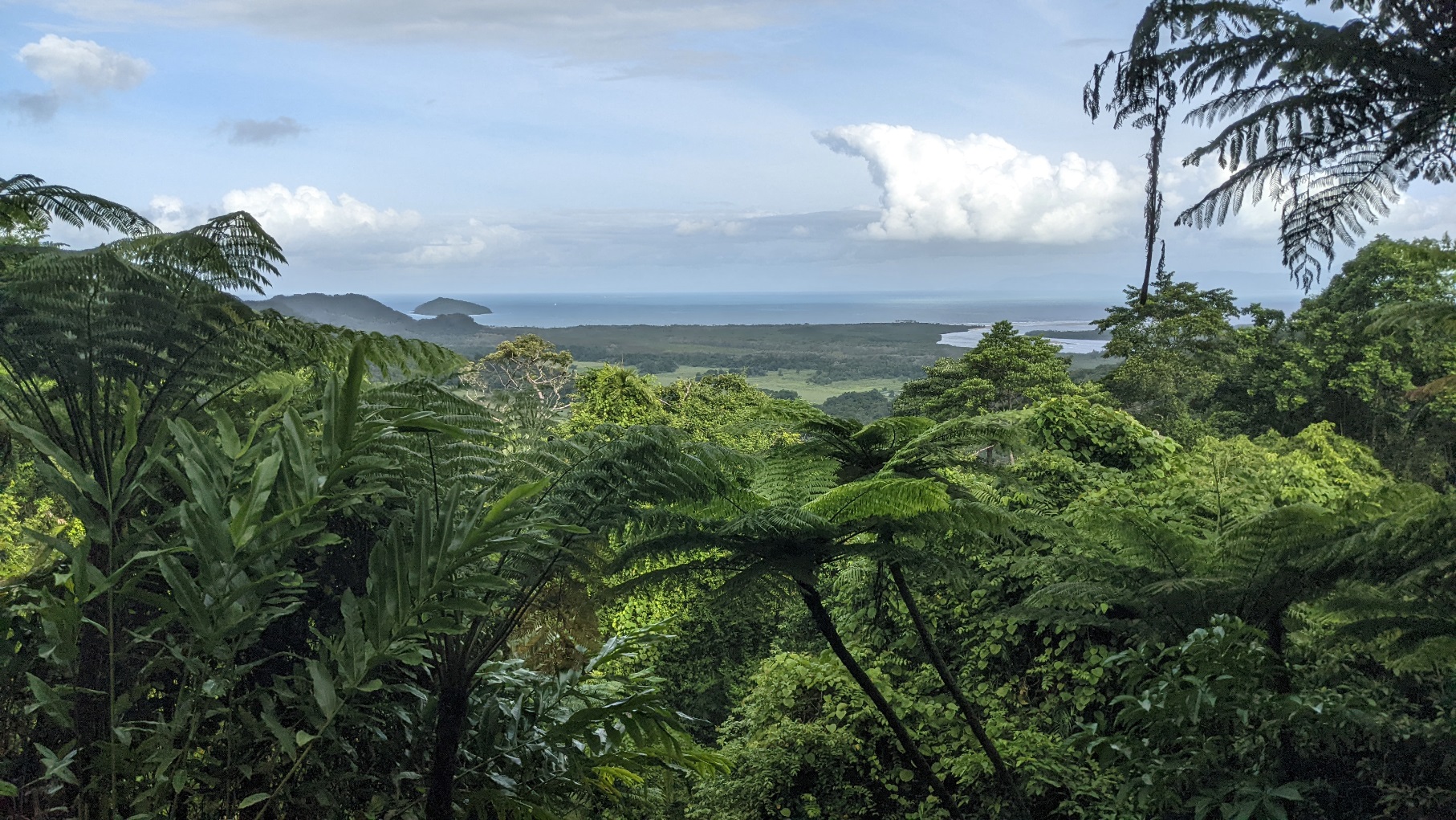
Nothing screams tropical more than the Walu Wugirriga lookout.
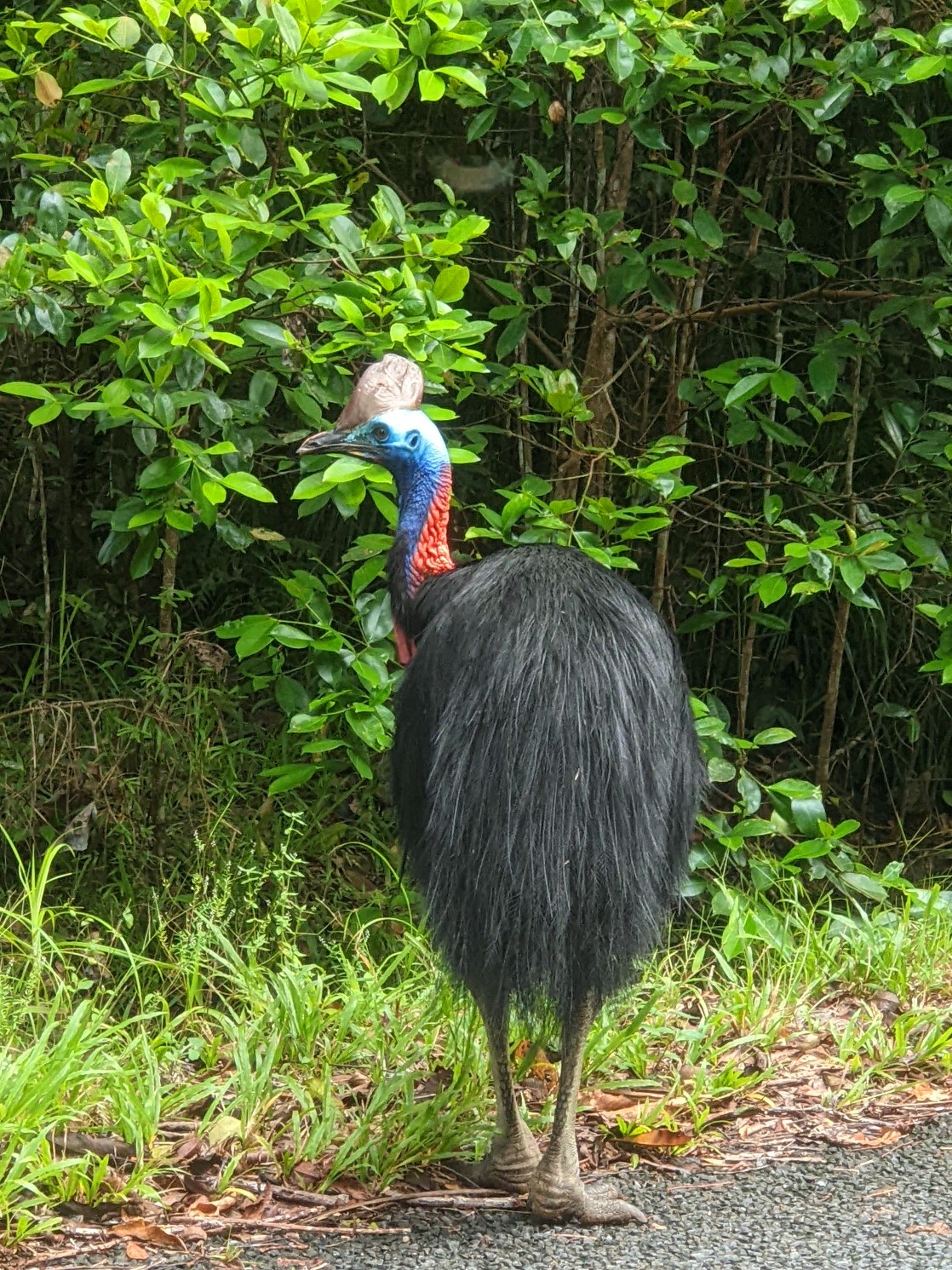

A large male Cassowary, with three babies in tow, holds up traffic on a road in Cape Tribulation.
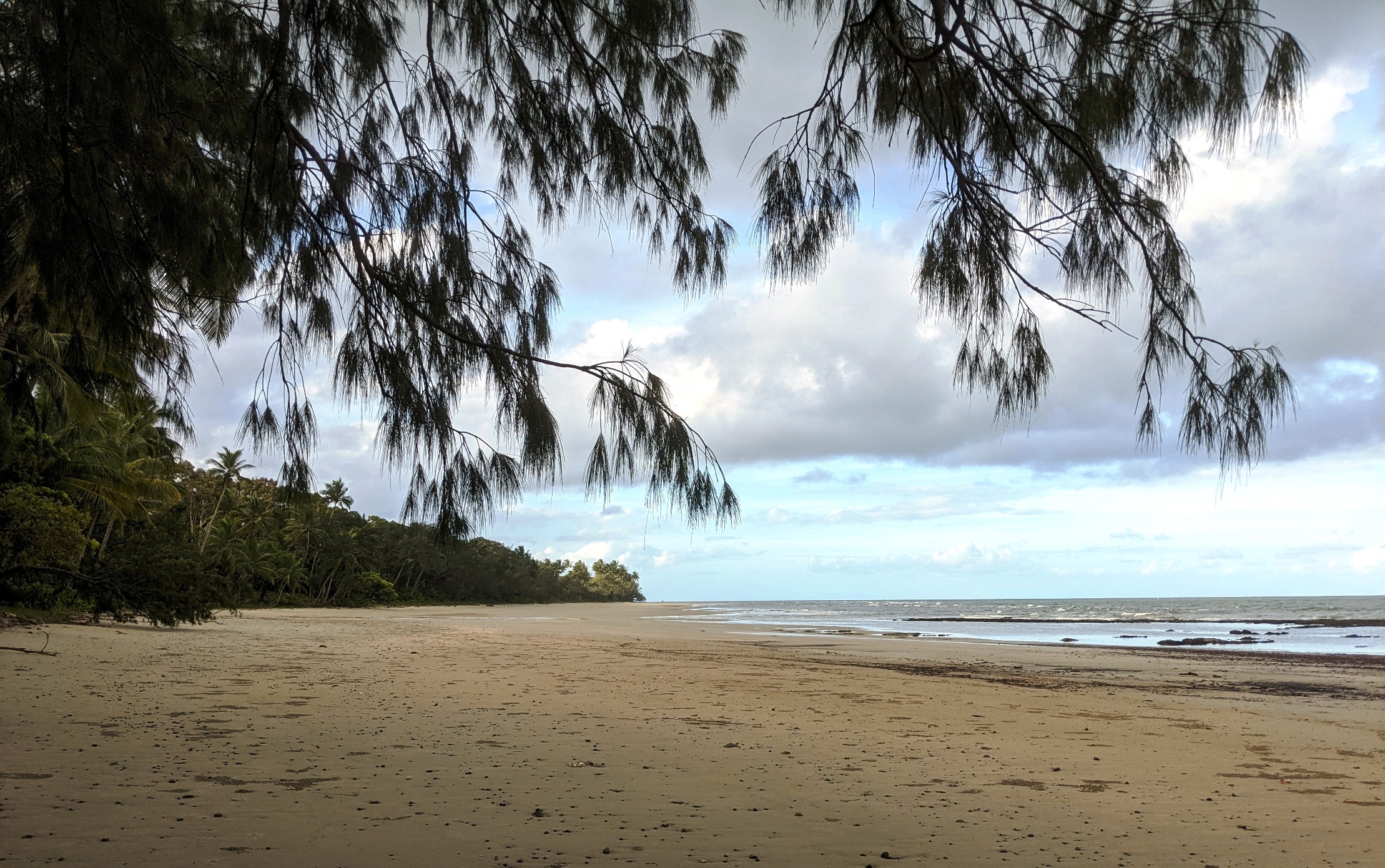
A deserted Noah Beach in Cape Tribulation.
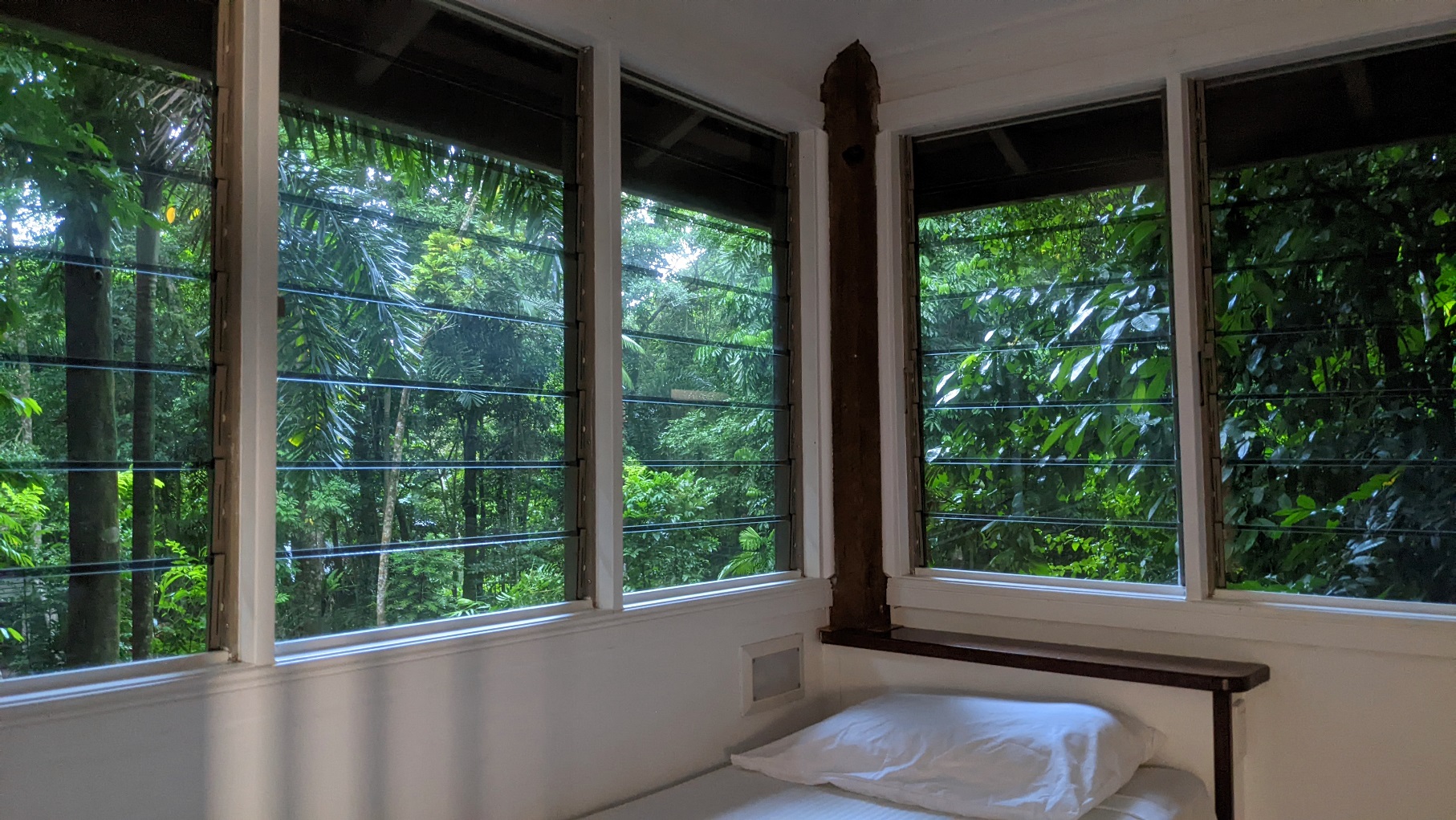
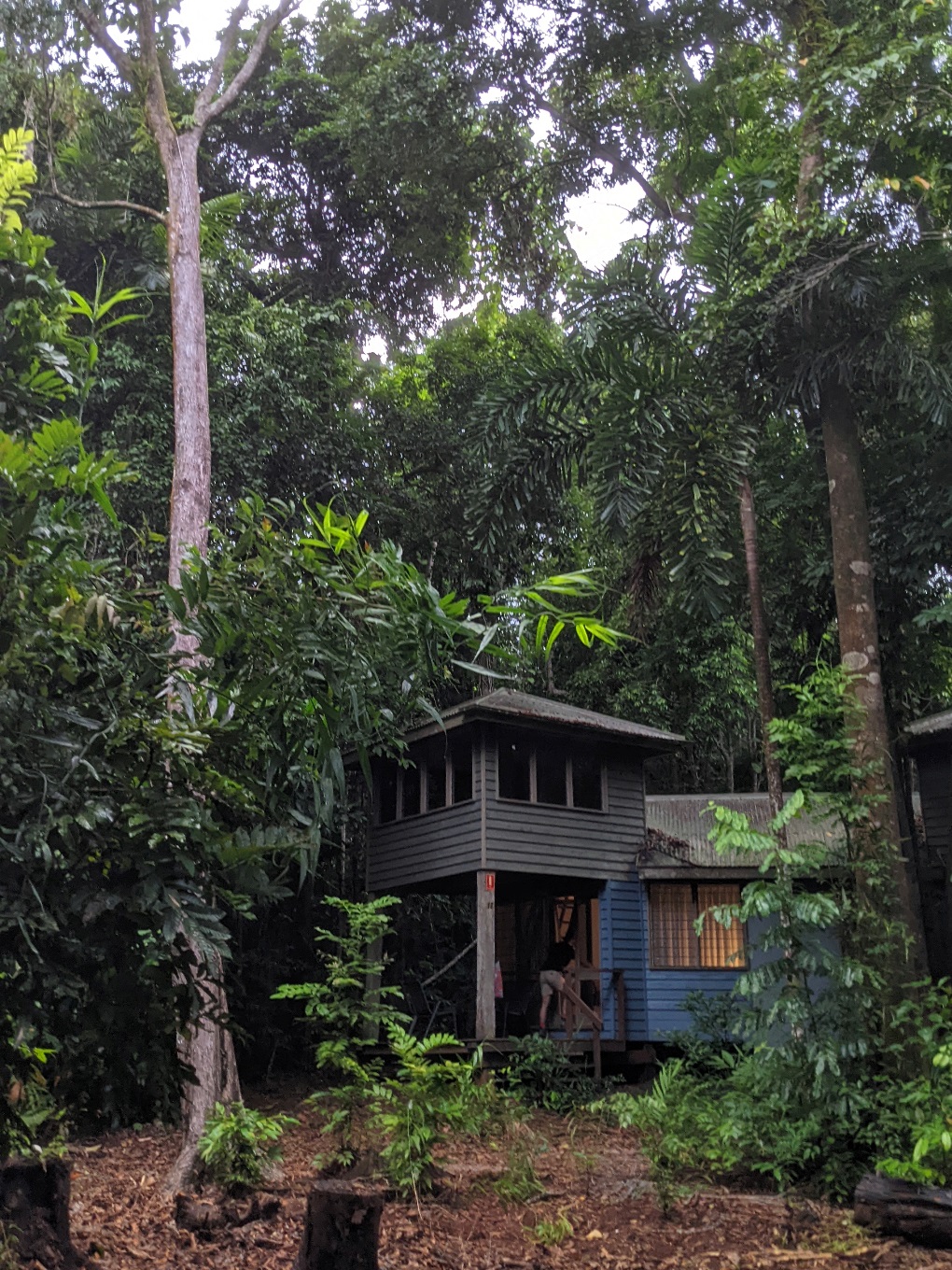

Our wonderful stay in the Daintree Rainforest, the oldest surviving rainforest in the world. Far right, morning coffee with only the trees for company.

The evocative density of Daintree Rainforest.
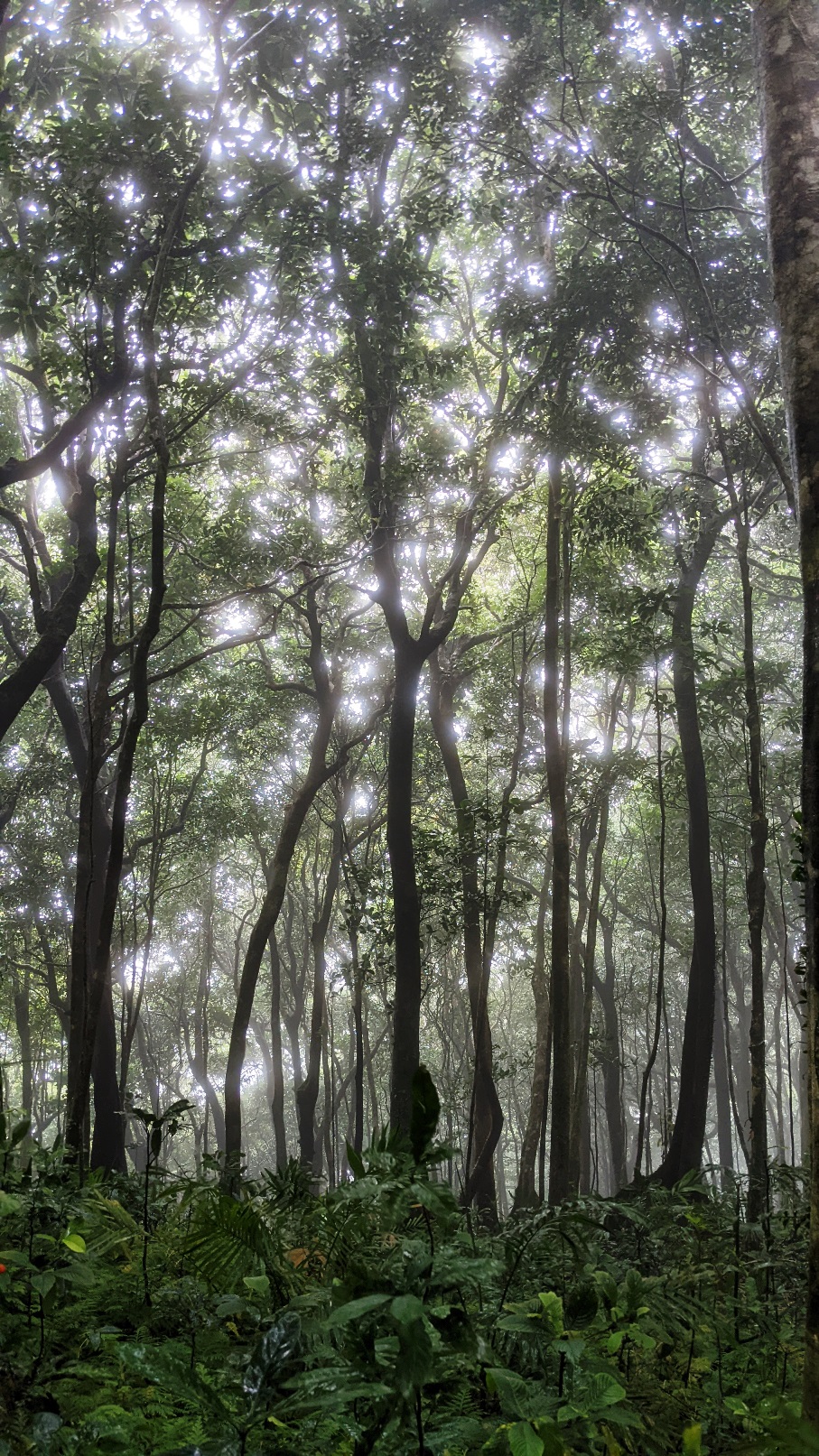
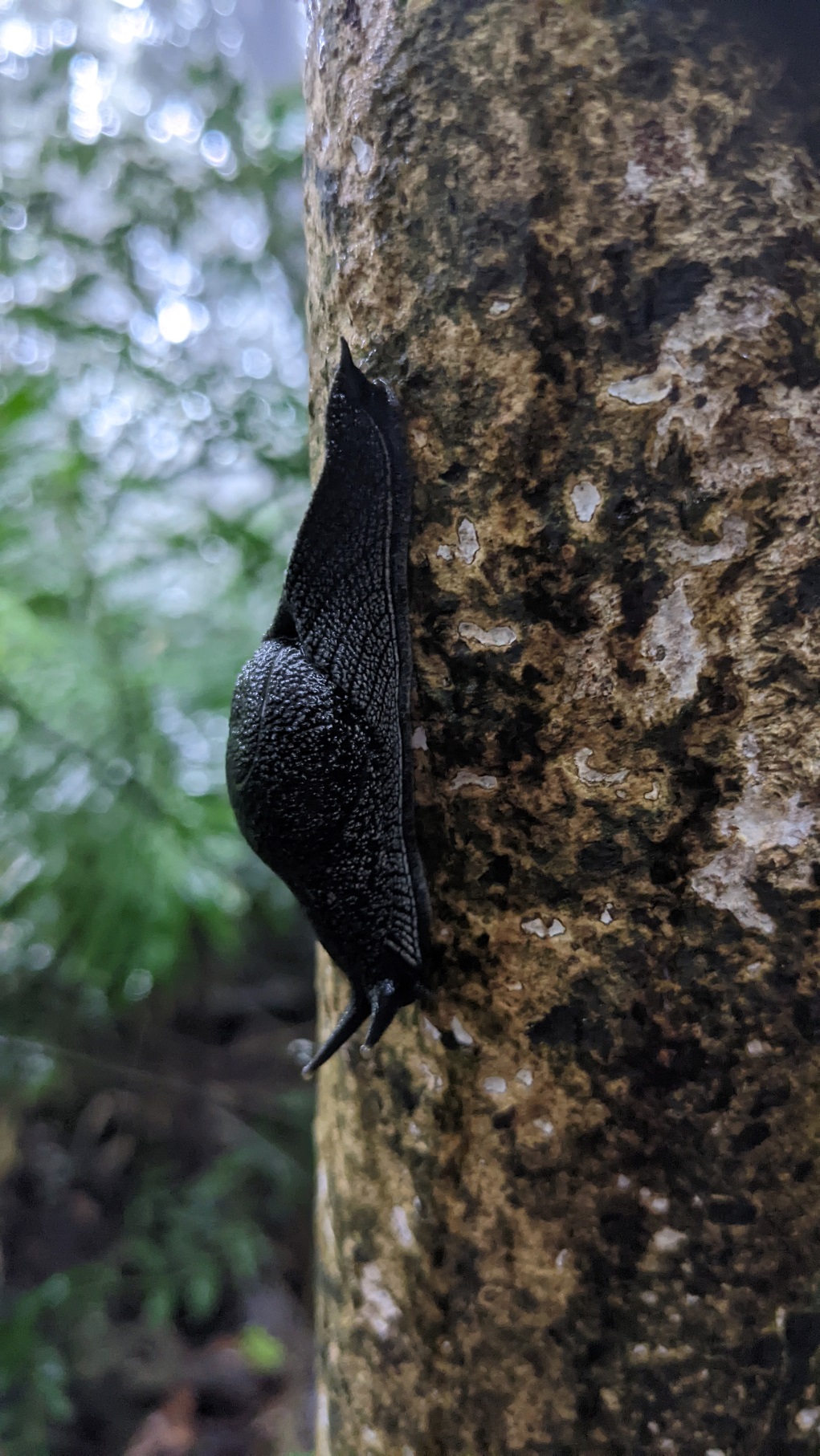
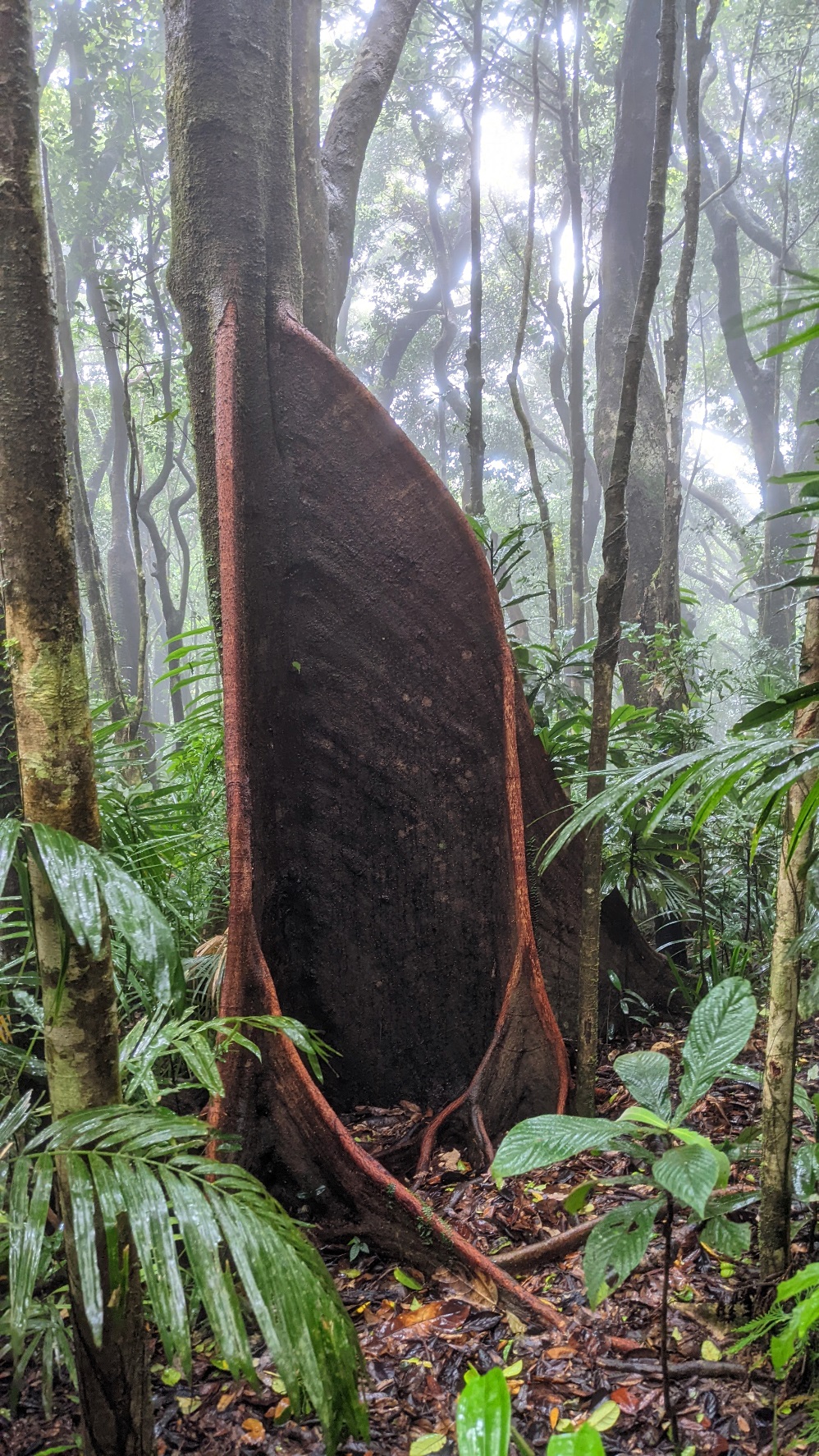
The ancient Daintree Rainforest: mystical scenes, otherworldly creatures and bizarre tree specimens.
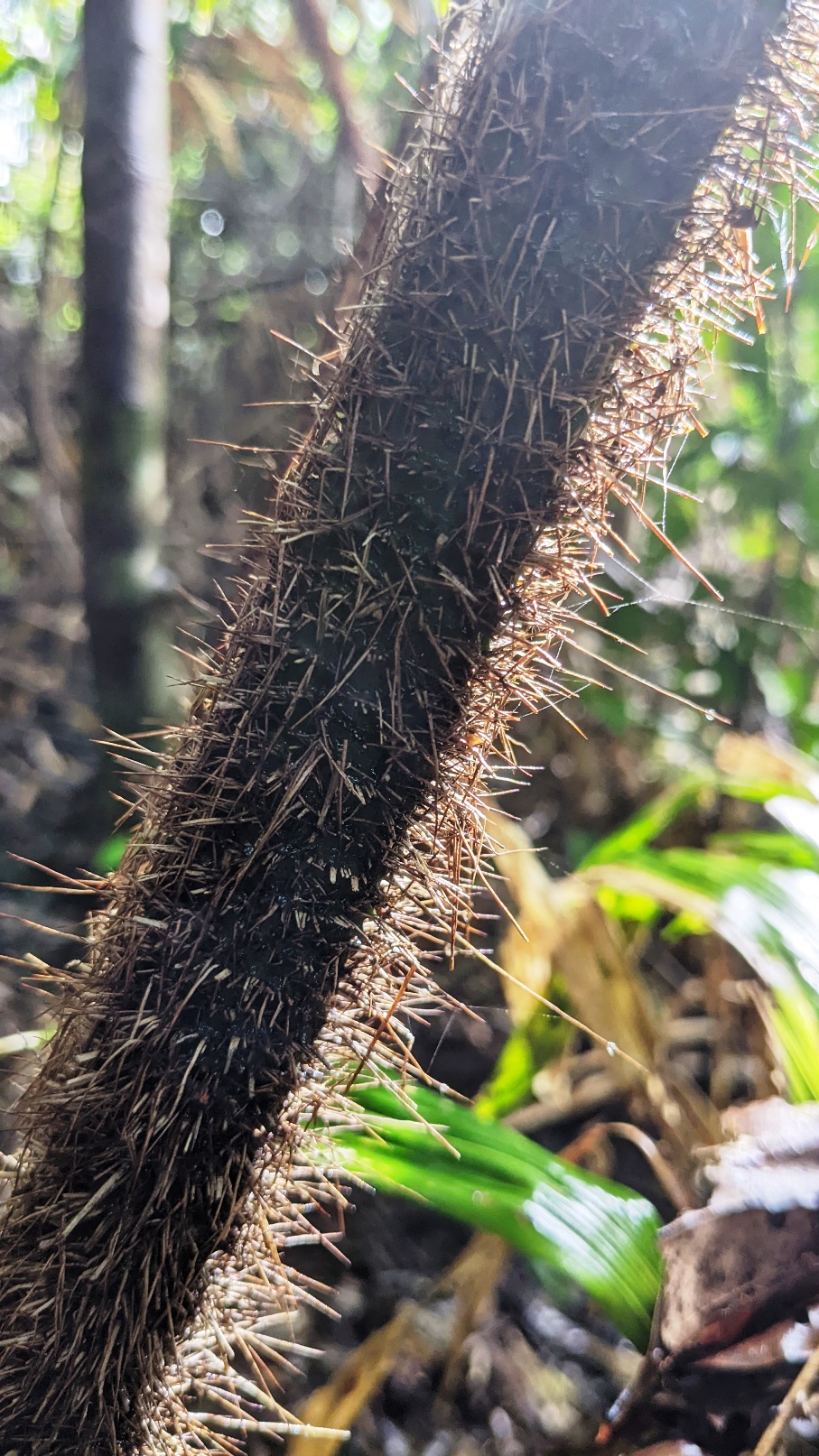
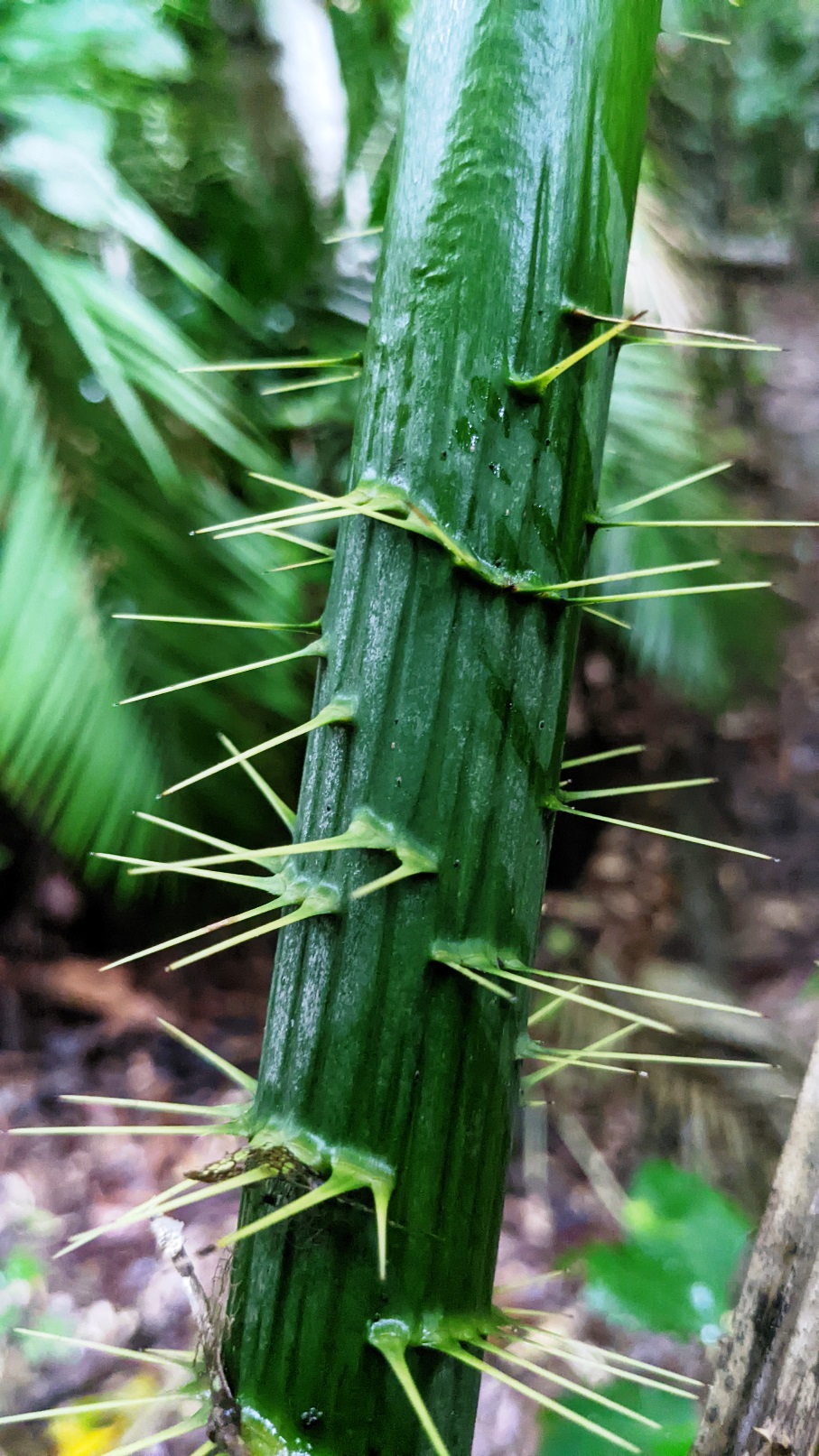
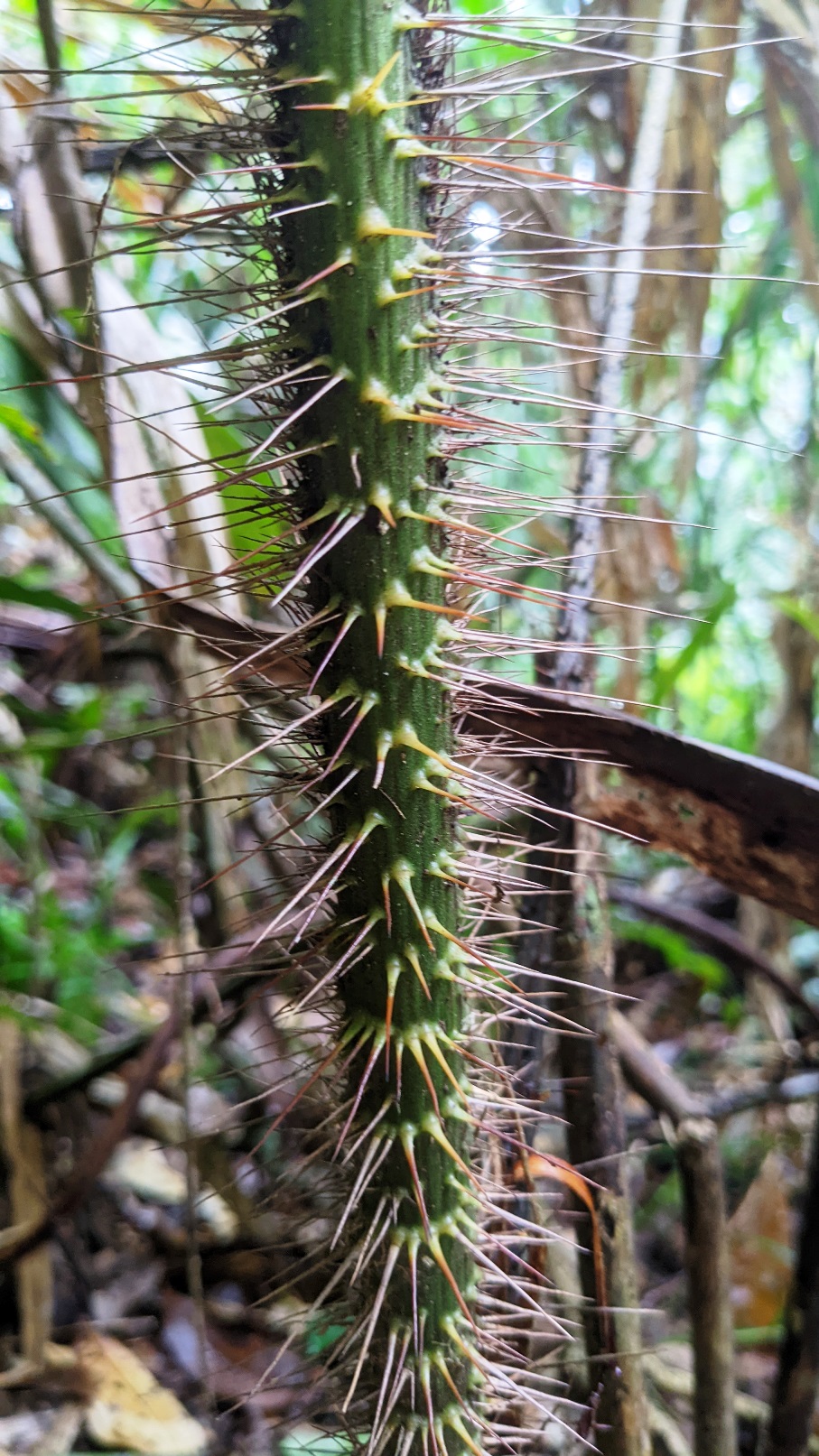
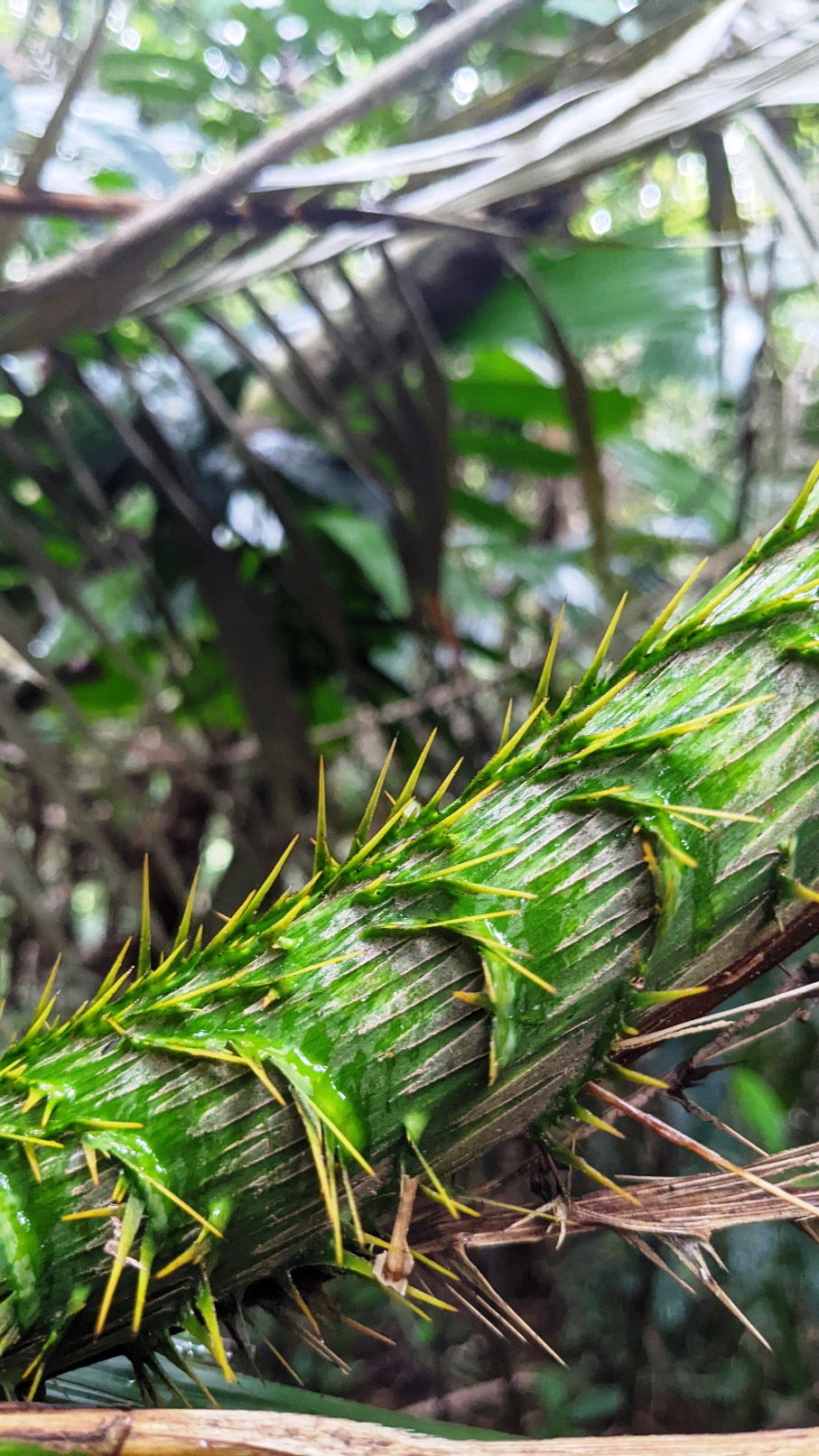
Daintree was a rainforest full of sharp surprises. This was certainly not a trail for the faint-hearted.
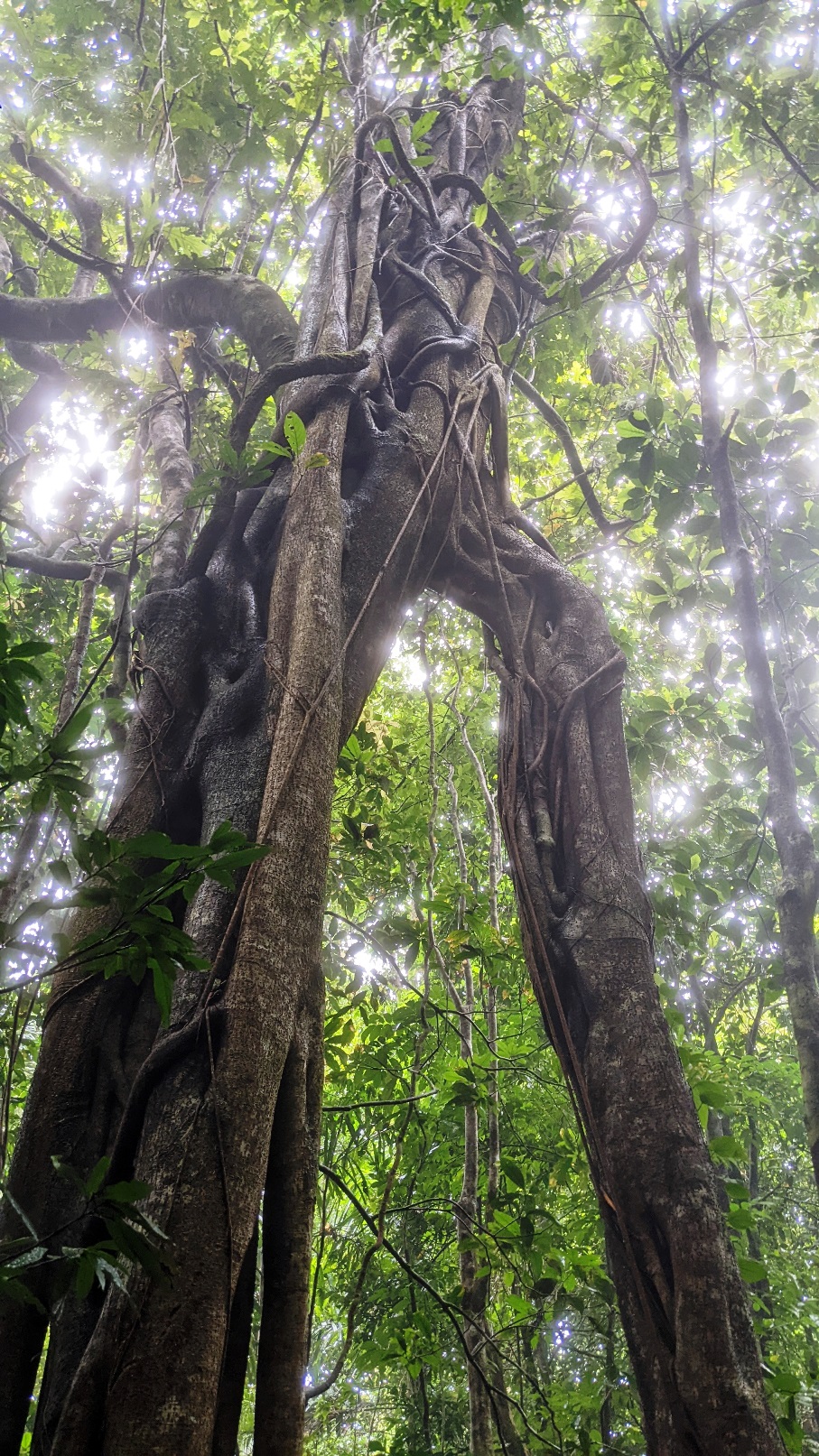
An incredible tree specimen, the Strangler Fig, puts the ancient into this rainforest.
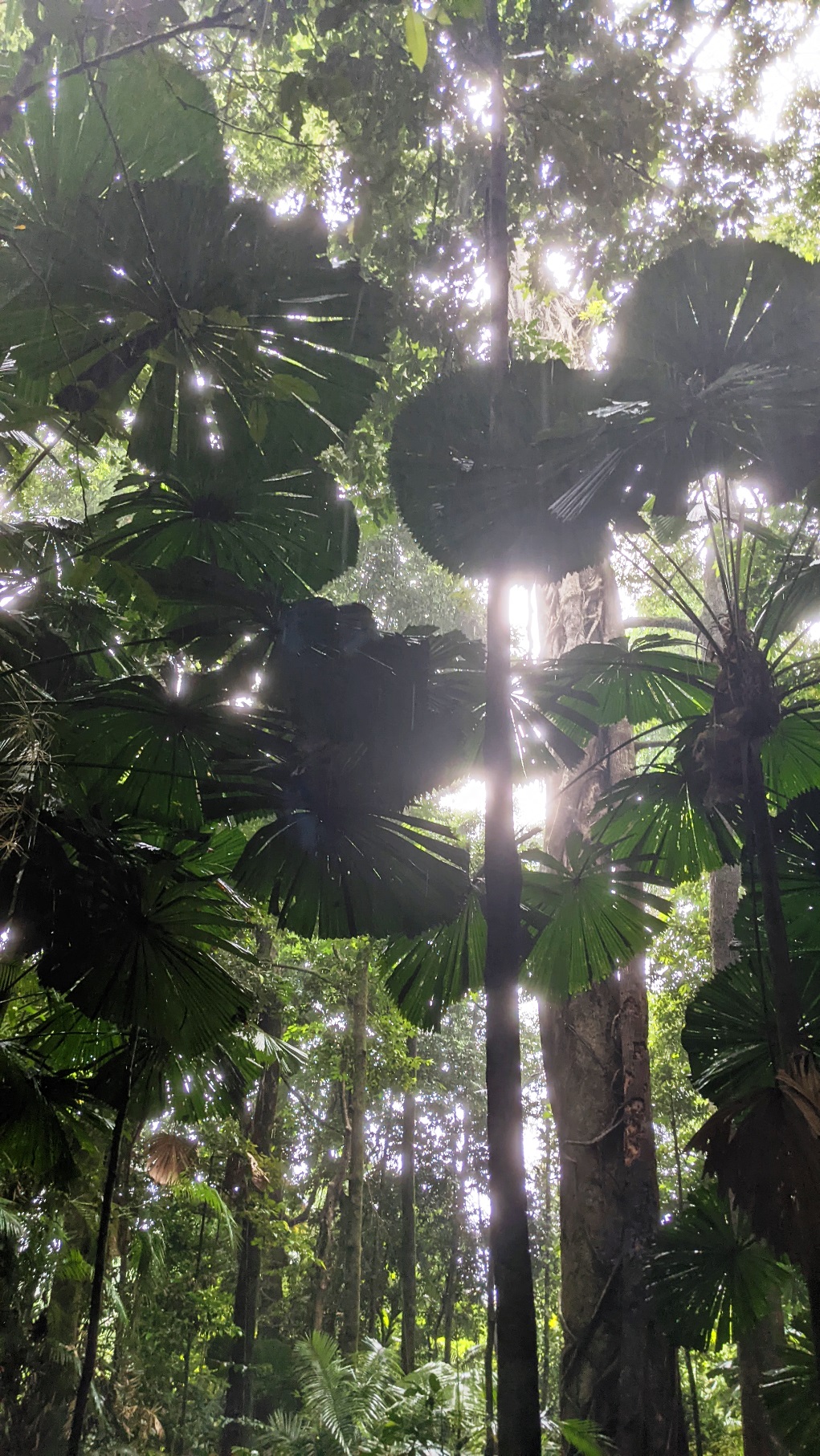
The wonderful rainforest canopy characterised by my favourite palm: the Fan Palm.
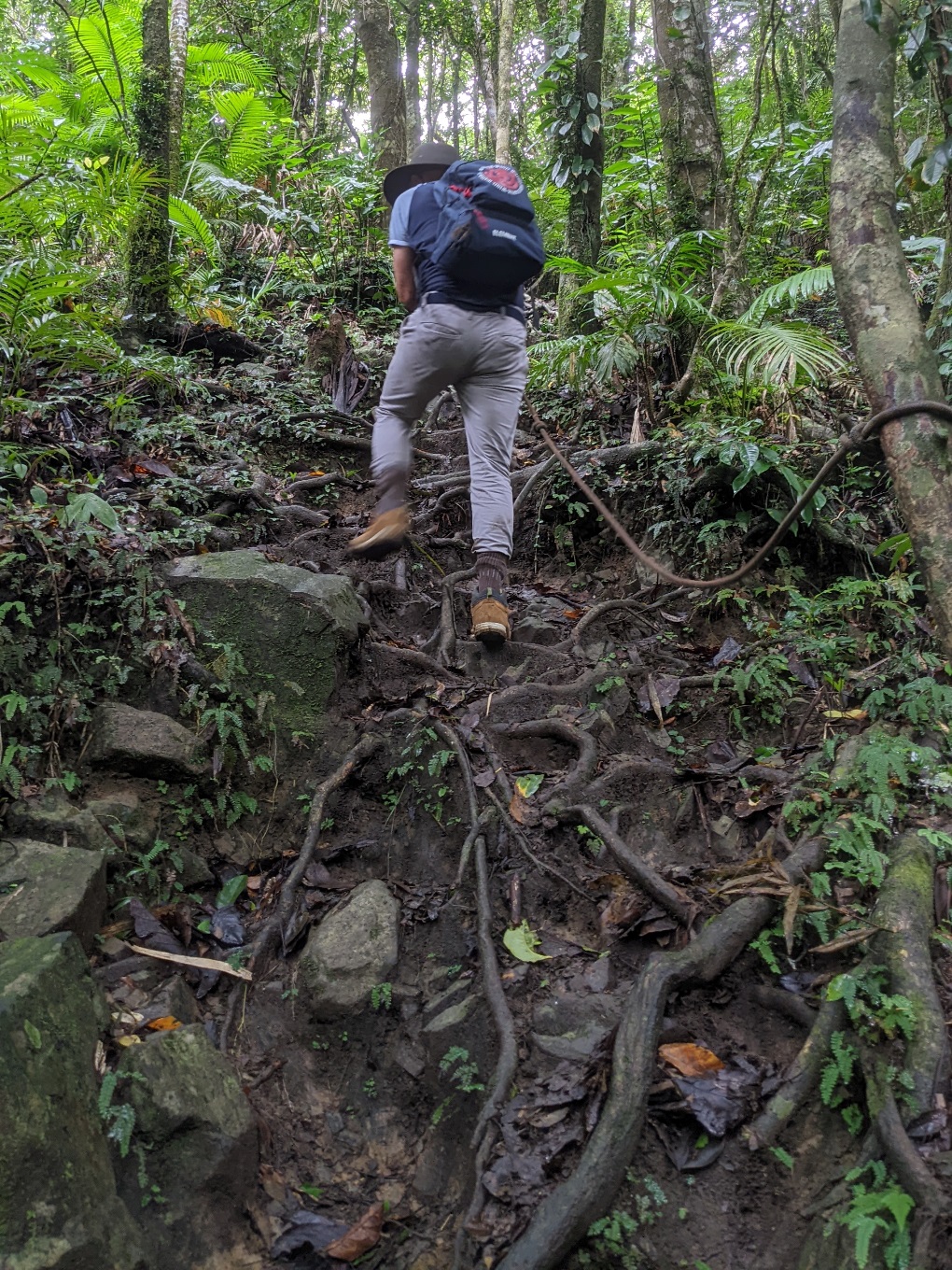

Taking the ropes on the ascent and the descent. Everything about this trail was vertical and challenging.
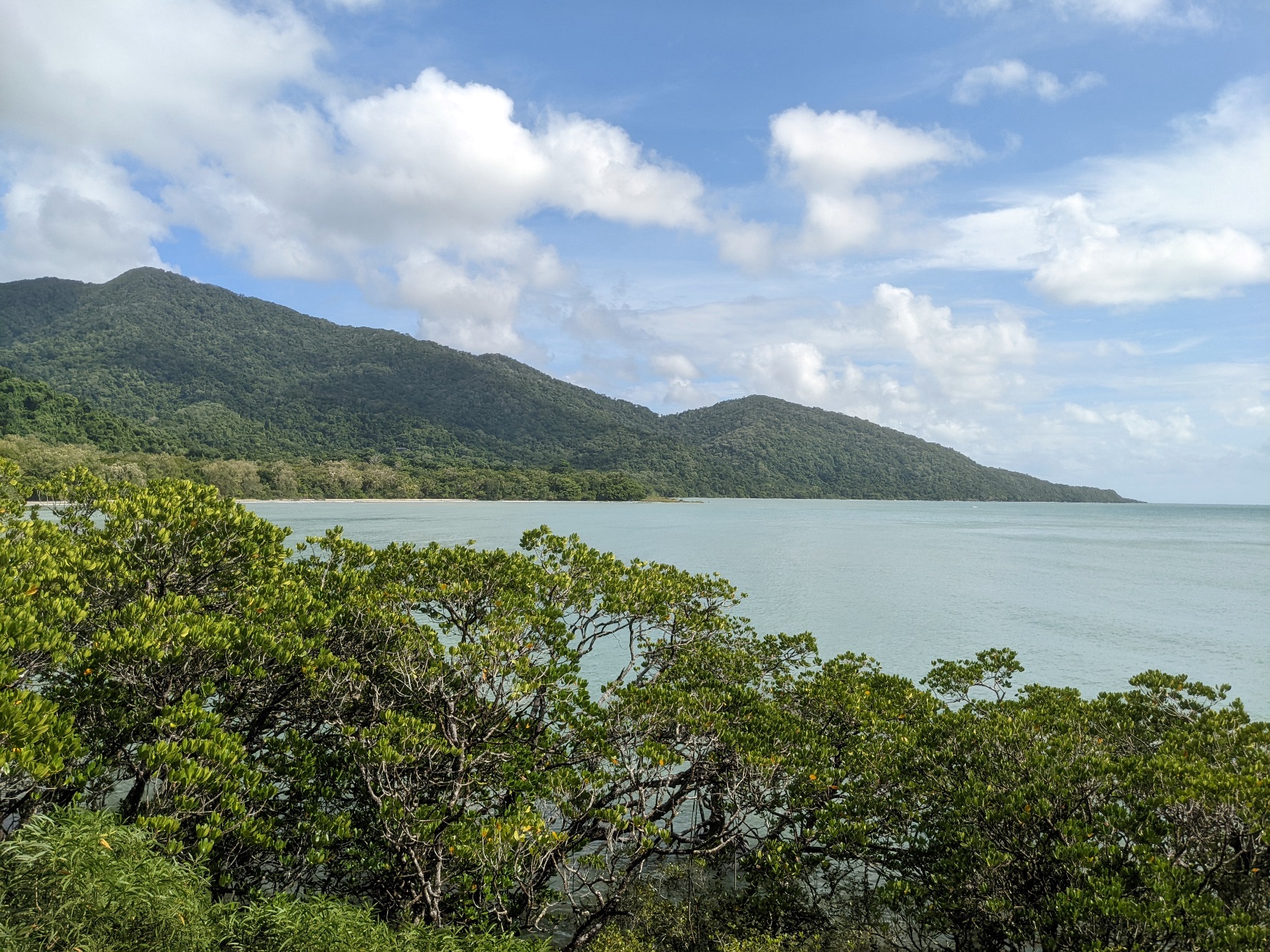

Where rainforest greets the ocean at Kulki Lookout.

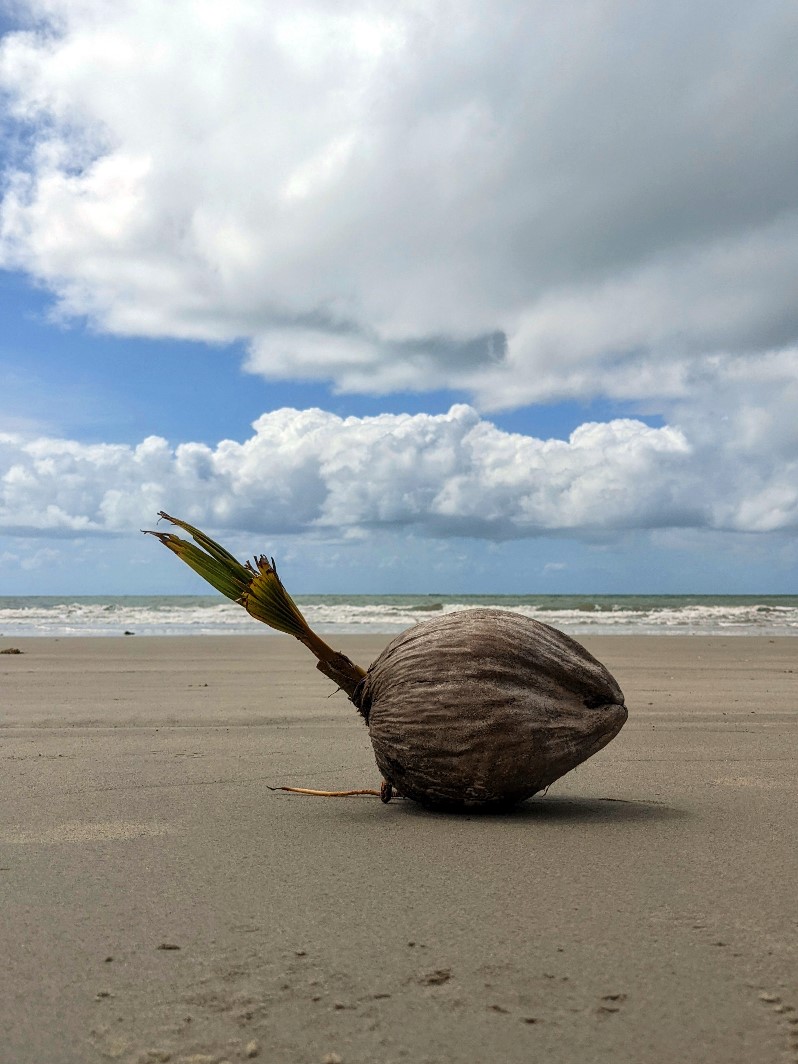
Thornton Beach: this may look idyllic but in 2016 was the scene of a horrific Crocodile attack where a woman was snatched never to be seen again. Right, a lonely coconut on a beach in Cape Tribulation.
travel tips, links & resources
- For a useful go-to guide on all things snorkelling in the Great Barrier Reef, check out Queensland.com's Barrier Reef section here. It offers a good overview for the first timer.
- Hire cars book up quickly in Australia, particularly around the school holidays. Book well in advance or end up having to fly into a different city like we did just to get your hands on one.
- Be mindful of your surroundings along the coast or any body of water in this part of the world. Watch out; crocs are about.
- Arguably out-of-towners are more at risk from Crocodiles. Know that this apex predator is not only brilliantly camouflaged in its chosen surroundings, but can be found in close proximity to everyday locations. Such deadly beasts are not only to be found far away in the wilder, remoter areas of Queensland but, in reality, it would be safer to assume that they can be residing in or near any body of salt water: rivers, beaches, mangrove swamps and creeks.
- This region of Queensland is famed as being the home of the incredible Cassowary bird, a sort of cross between a turkey and an emu. Avoid getting too close; these birds may look pretty but they are not friendly. Take your photos from a distance. As the Queensland Parks website advises: "Be Cass-o-wary".
- If you haven't yet invested in a GoPro underwater camera, then snorkelling in the Great Barrier Reef is the perfect excuse you've been waiting for.
- We undertook our Great Barrier Reef tour with Ocean Freedom and had a good experience. Their website is here.
- Mount Sorrow Ridge Trail: this is actually close to 12 kilometres - nearly twice the advertised distance featured on the official Queensland Parks website and the distance markers themselves nailed to trees along the route. I am used to published bushwalking distances being a little inaccurate in New South Wales but this was by far the worst example I have come across. If you wish to undertake the Ridge Trail, plan for a 12km hike and not 7km as billed. Using a GPS tracker one can be ever so accurate about the actual distance walked.
- In tropical climates leeches should be anticipated in rainforest areas. They aren't pleasant. The sight of seeing one feed on your blood is a confronting one but can be easily and quickly dealt with. Make sure you have an object with a straight edge like a credit card, pull your skin taught at the affected area and scrape the thing away. I also washed the wound with antibacterial wash and applied a band aid. To avoid leeches altogether, use DEET on any exposed areas of the skin. We found that using DEET in spray form was especially effective when sprayed on boots and hiking socks. This stopped the leeches from attaching themselves onto my boots and then making their way northwards up my legs.
you may also like
